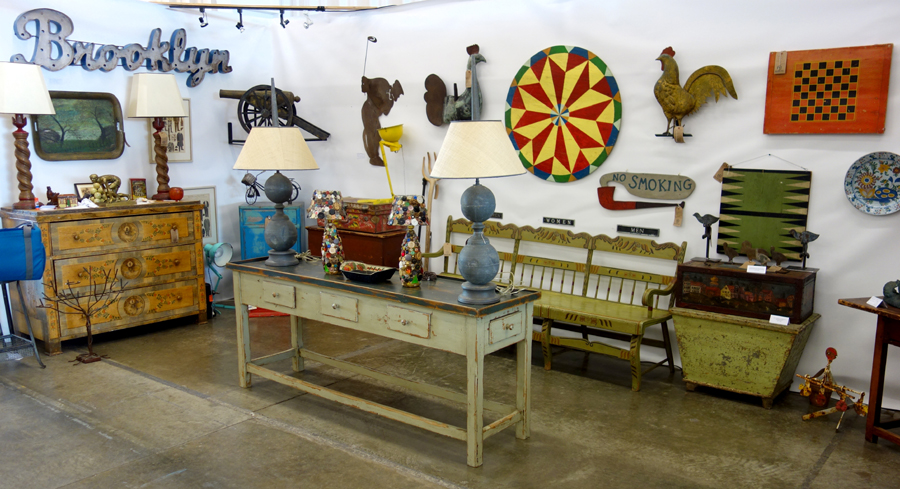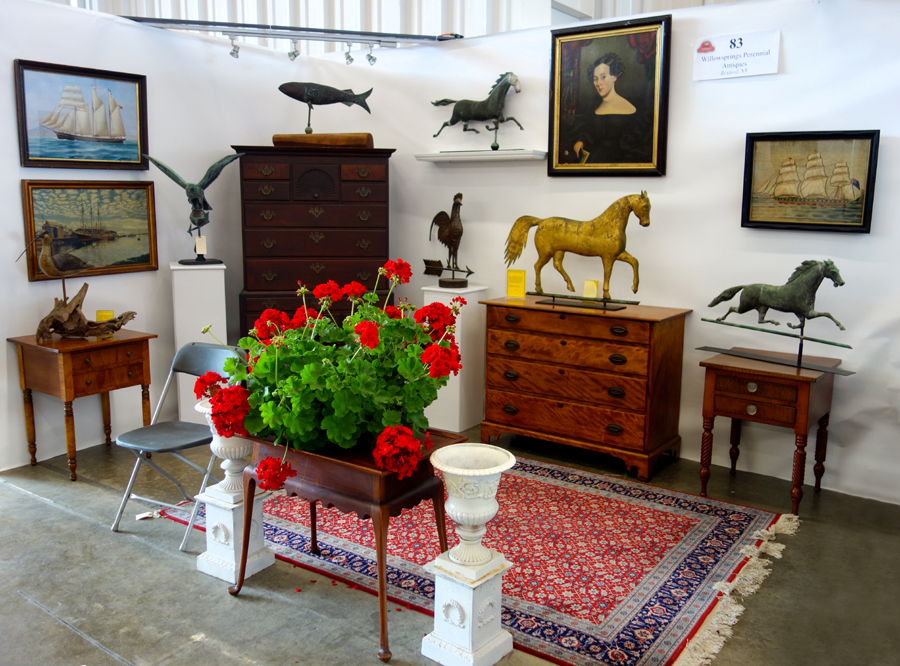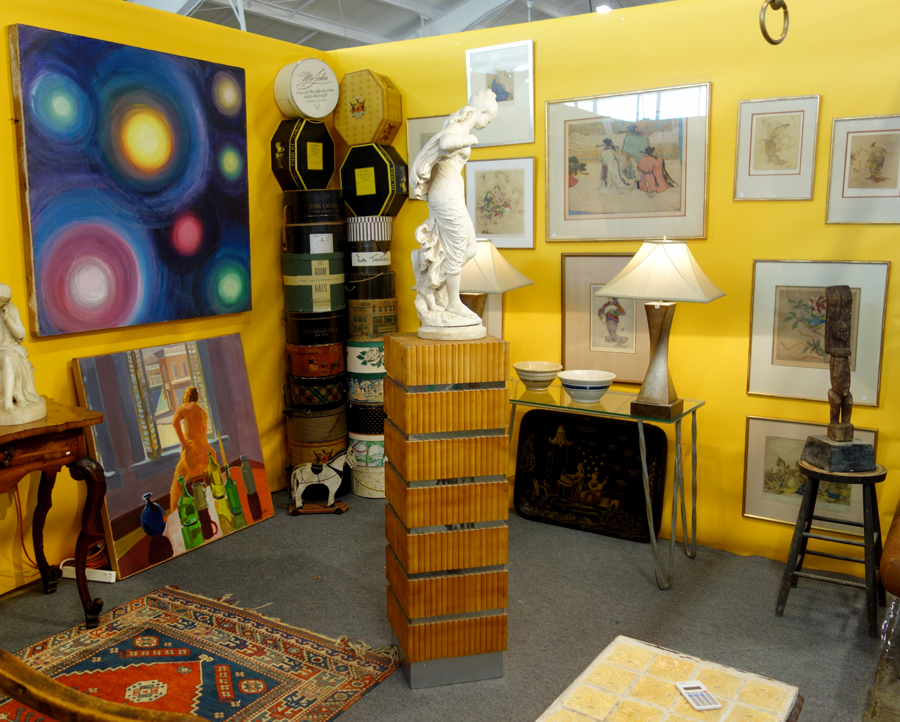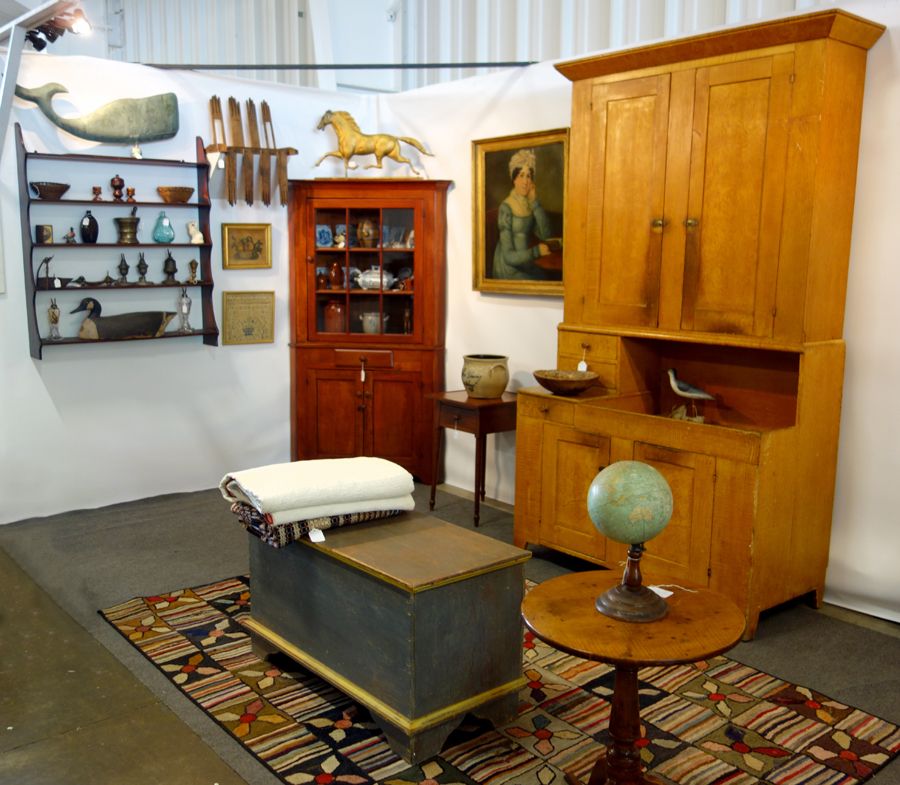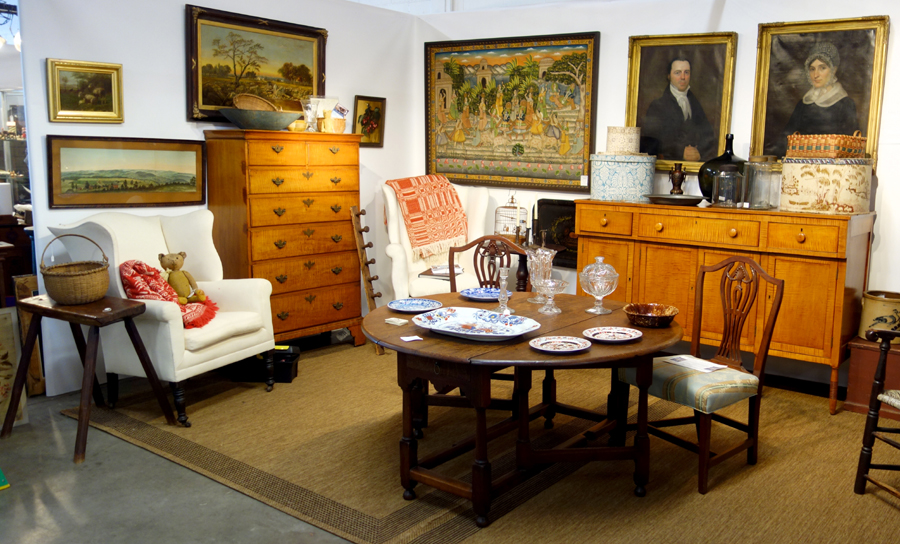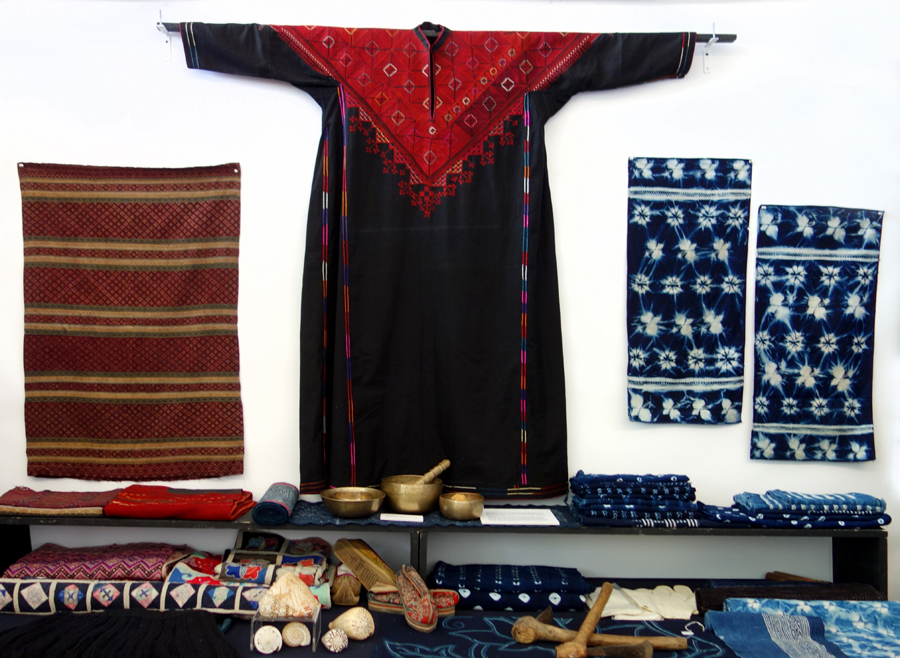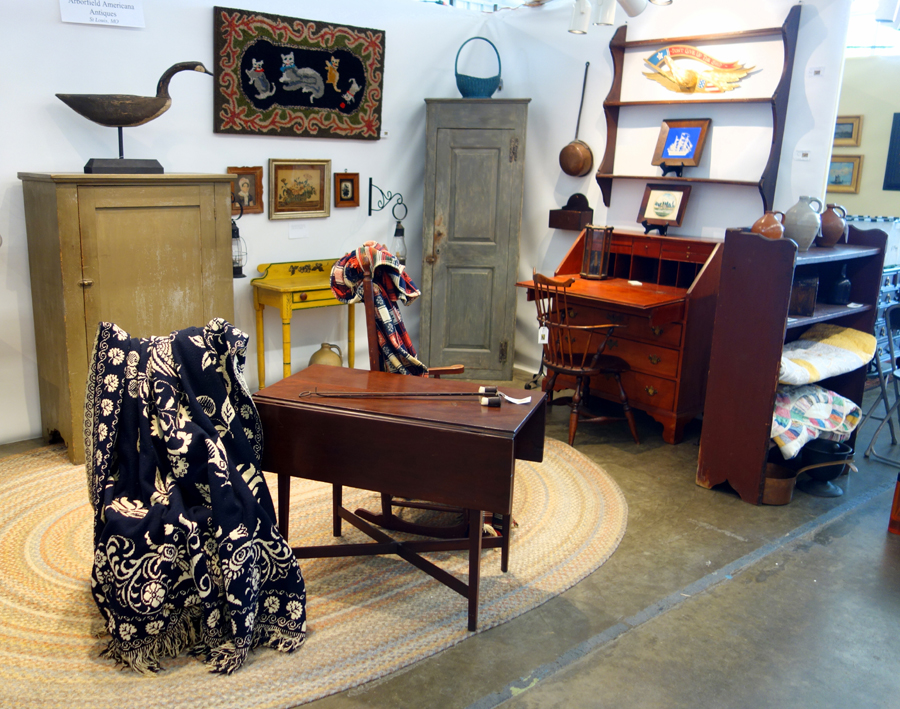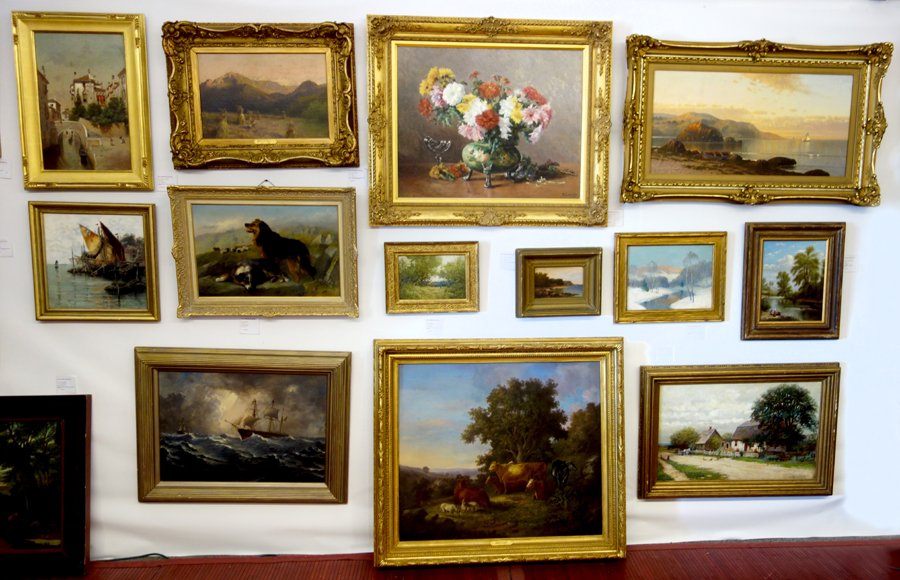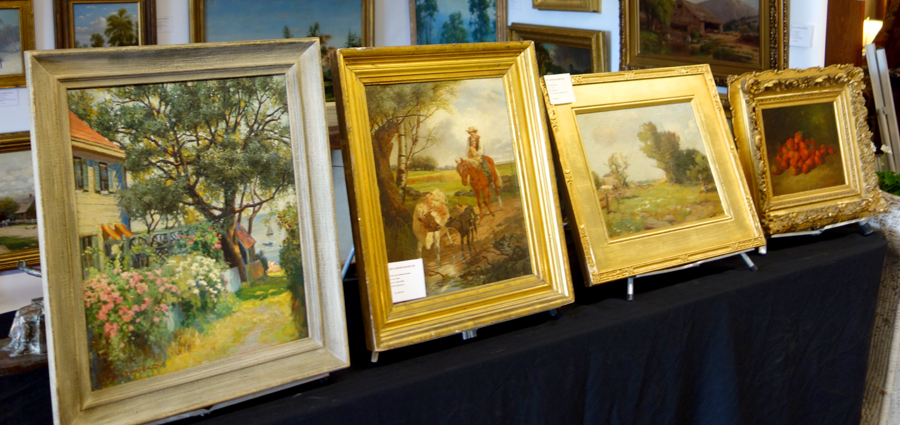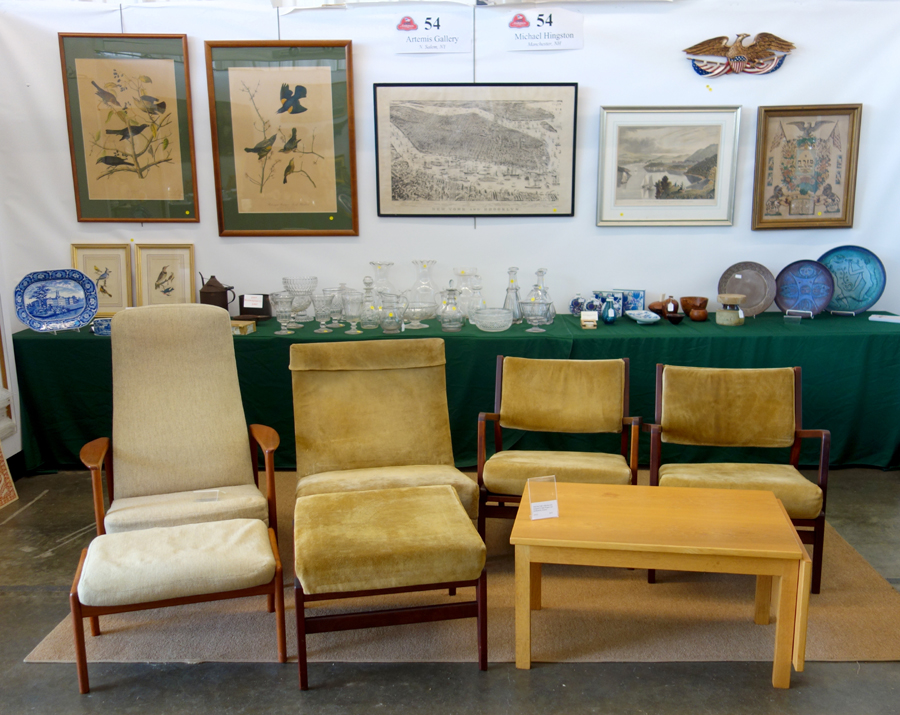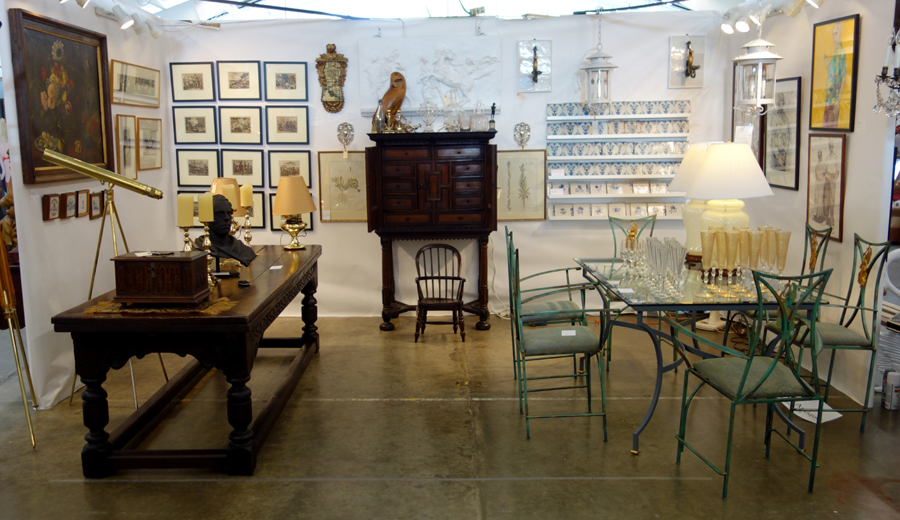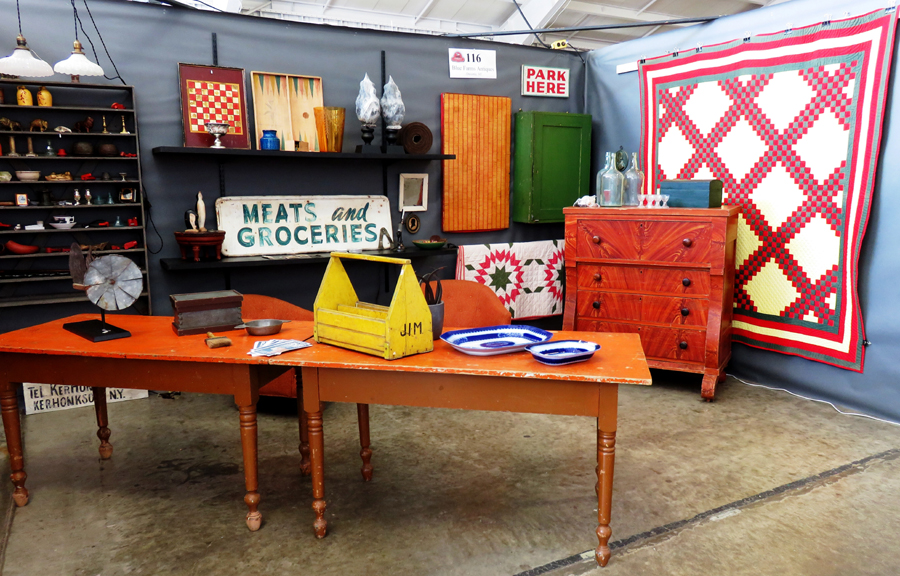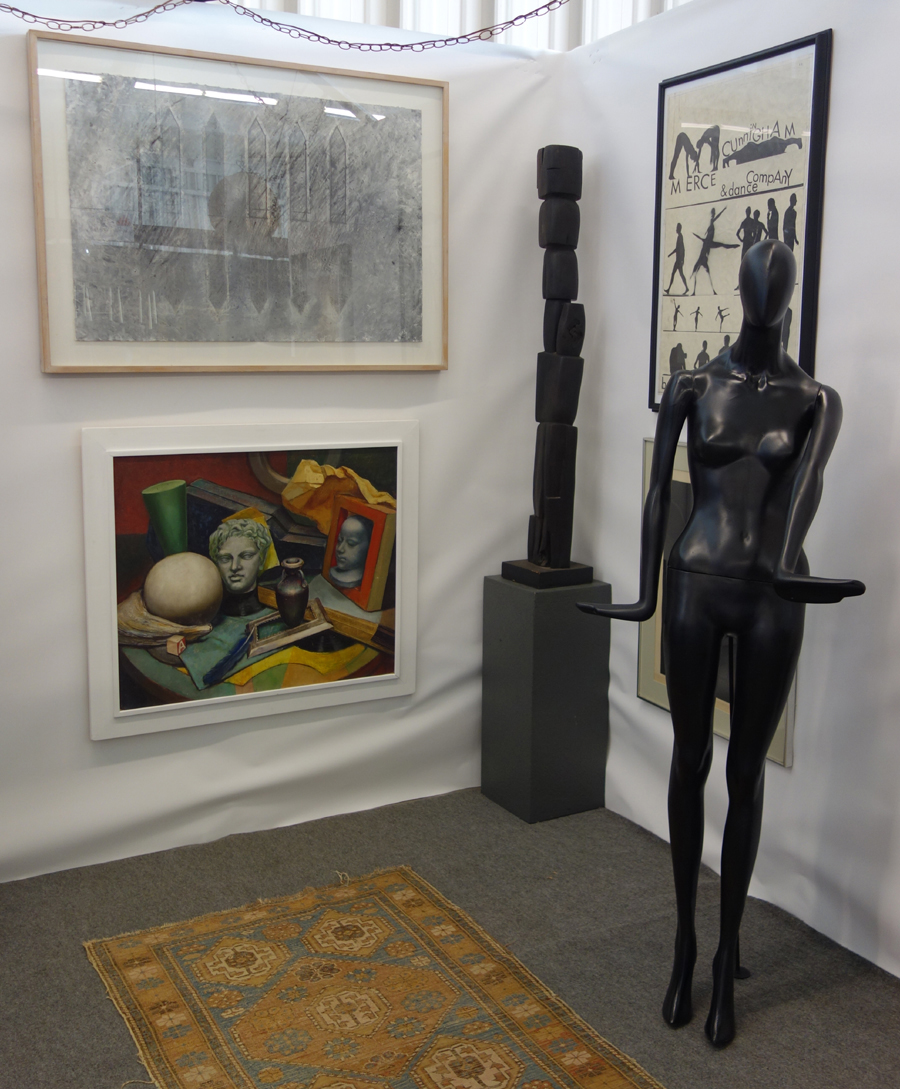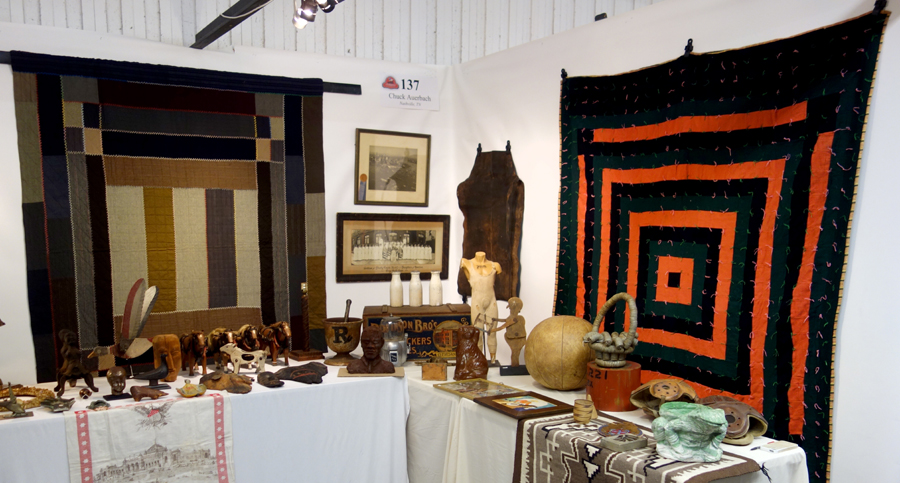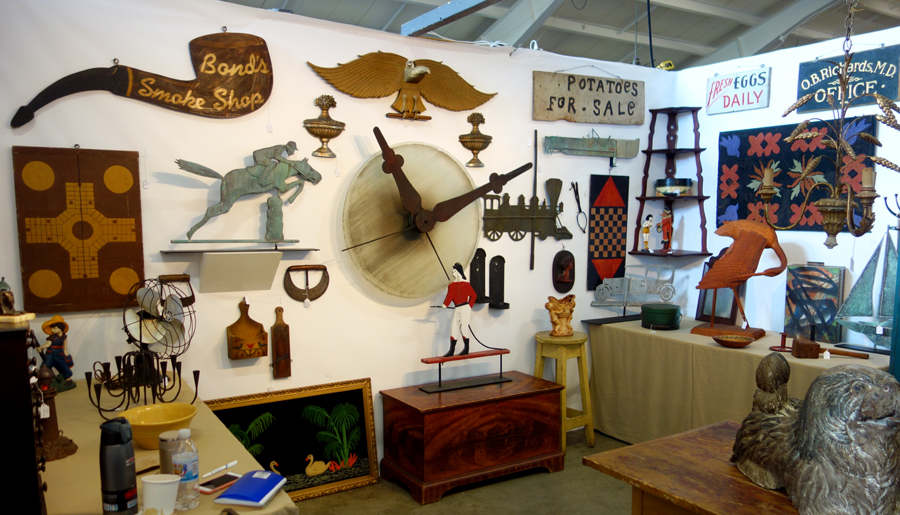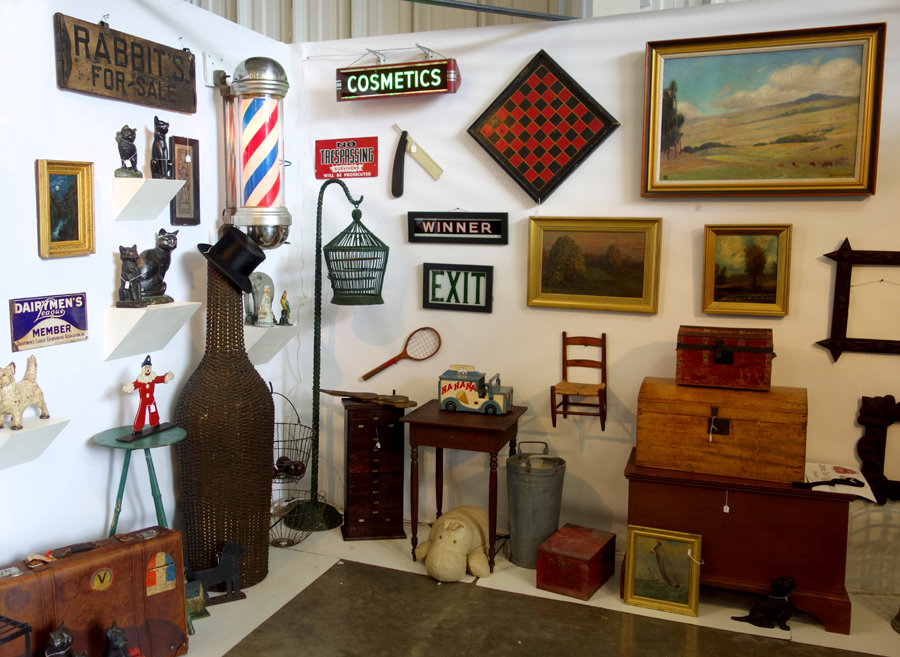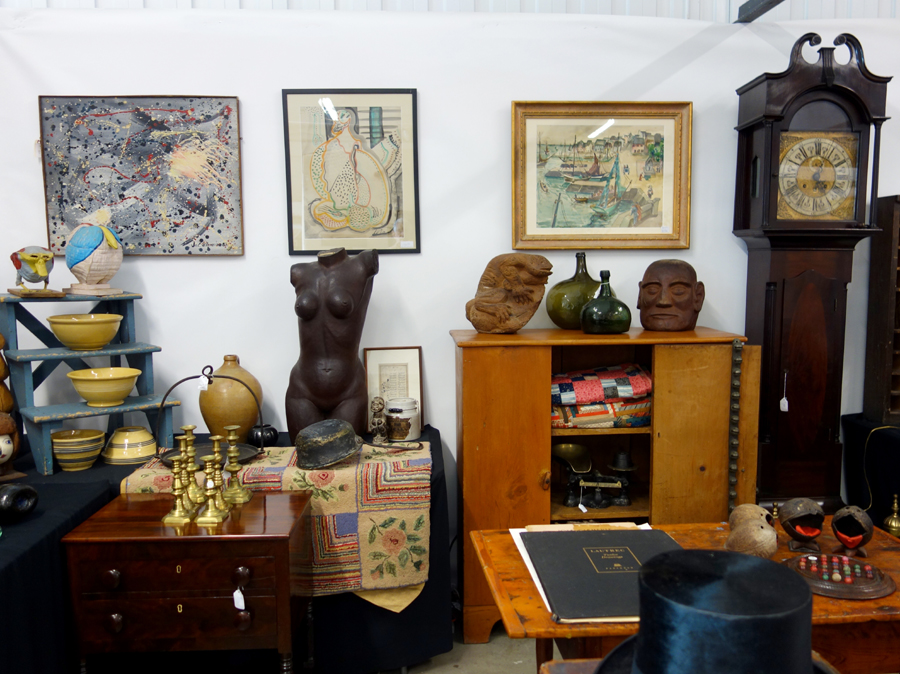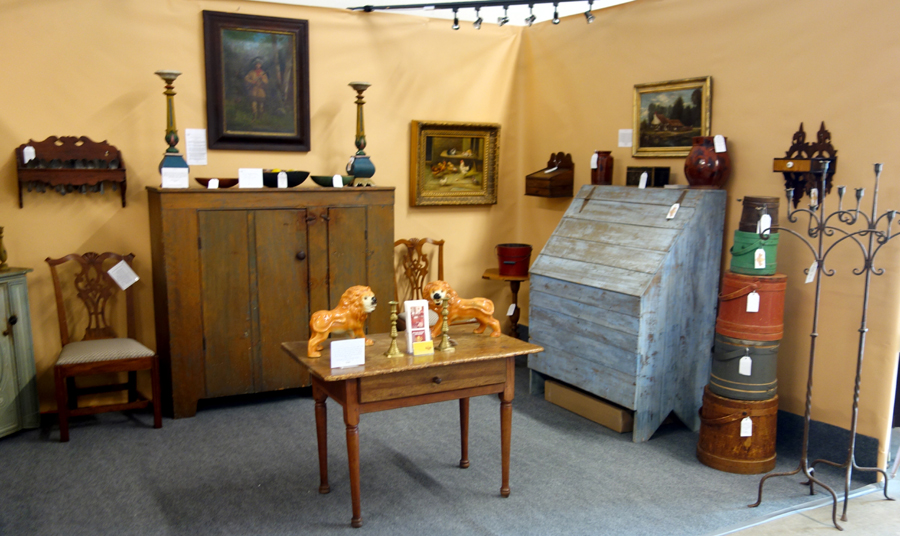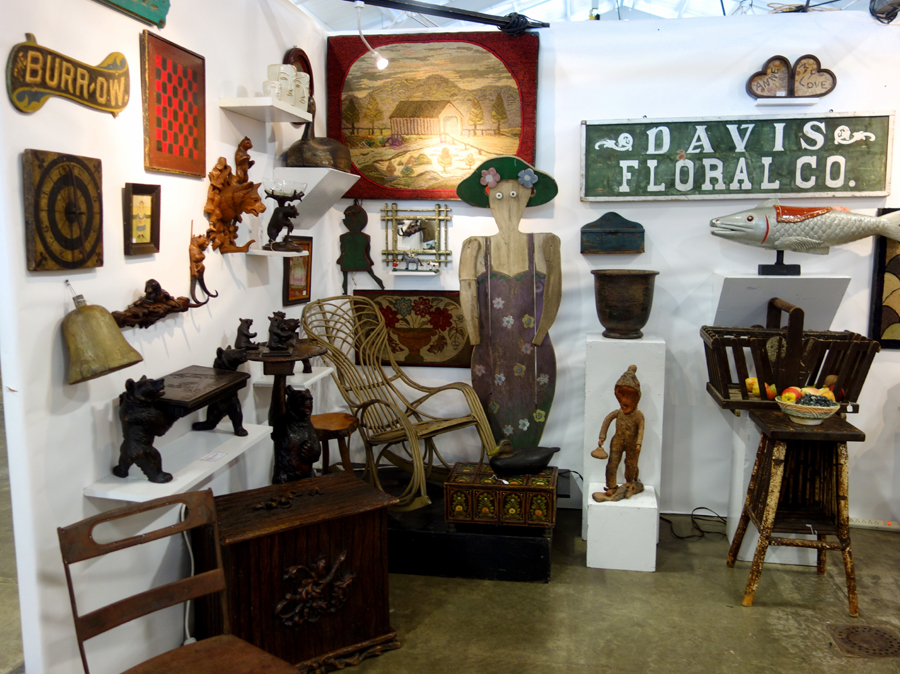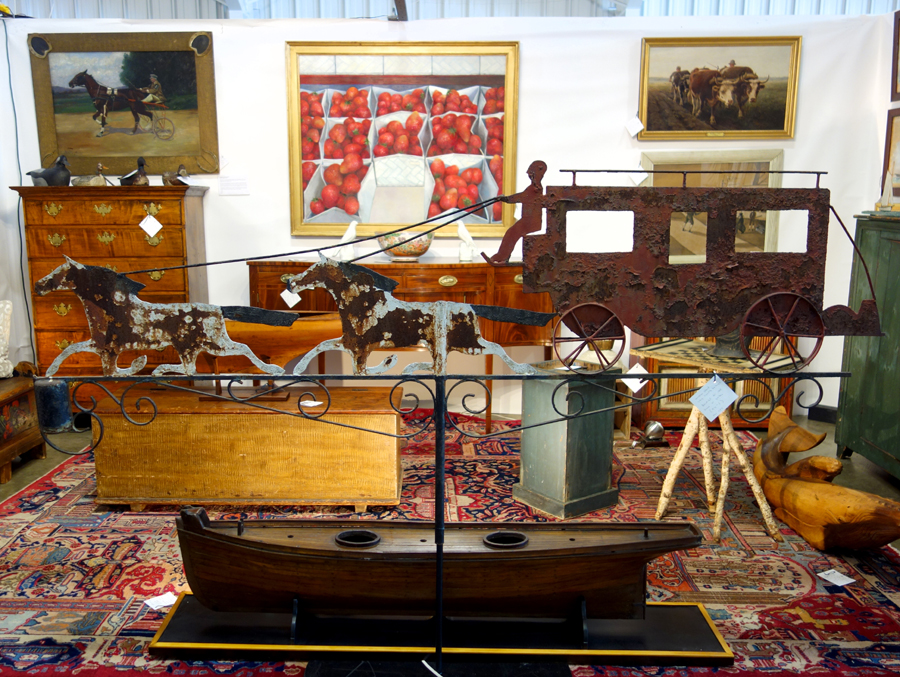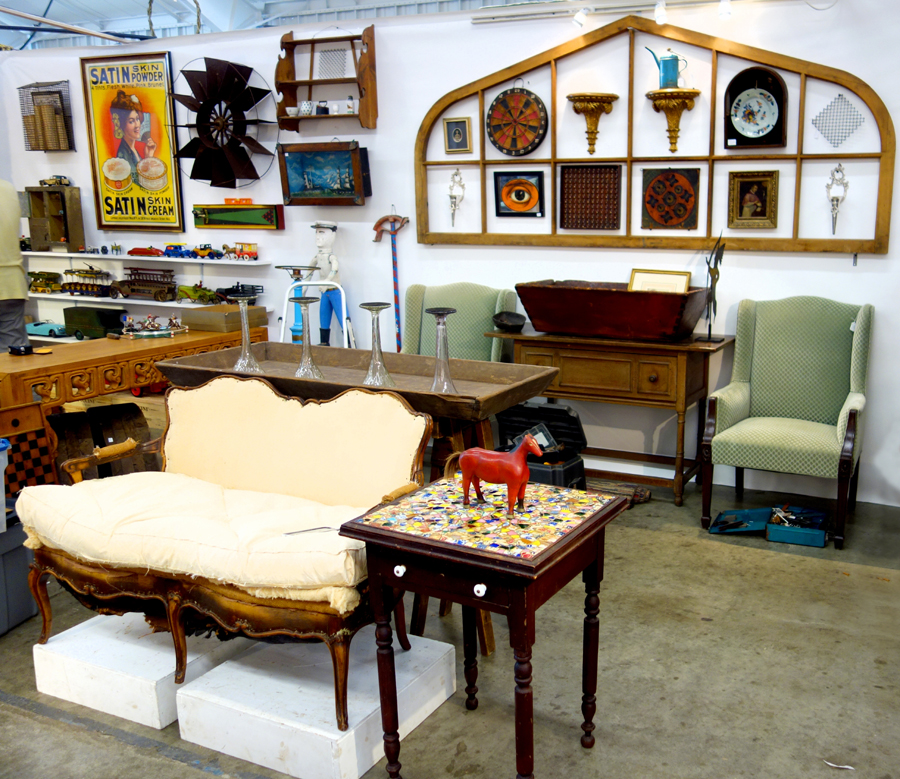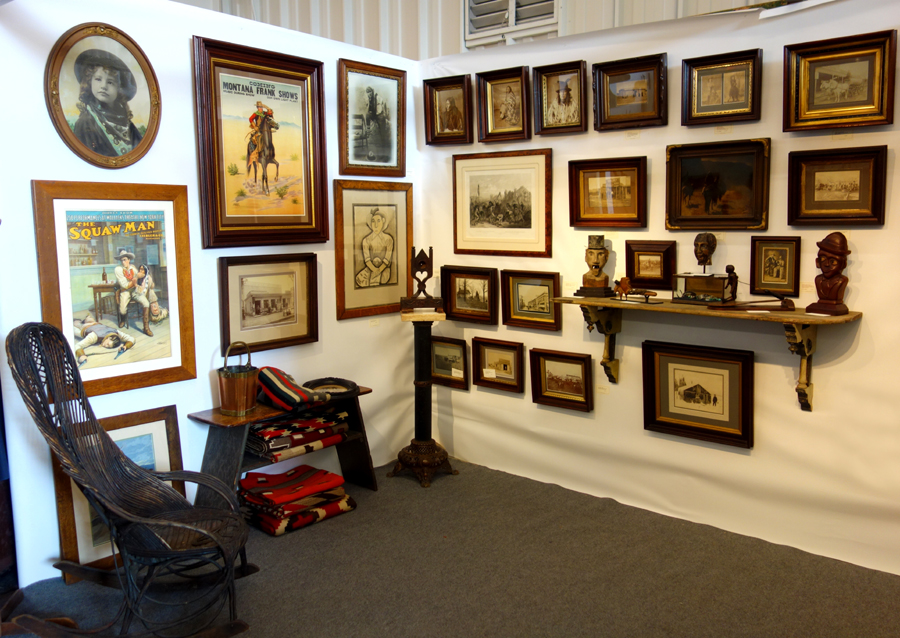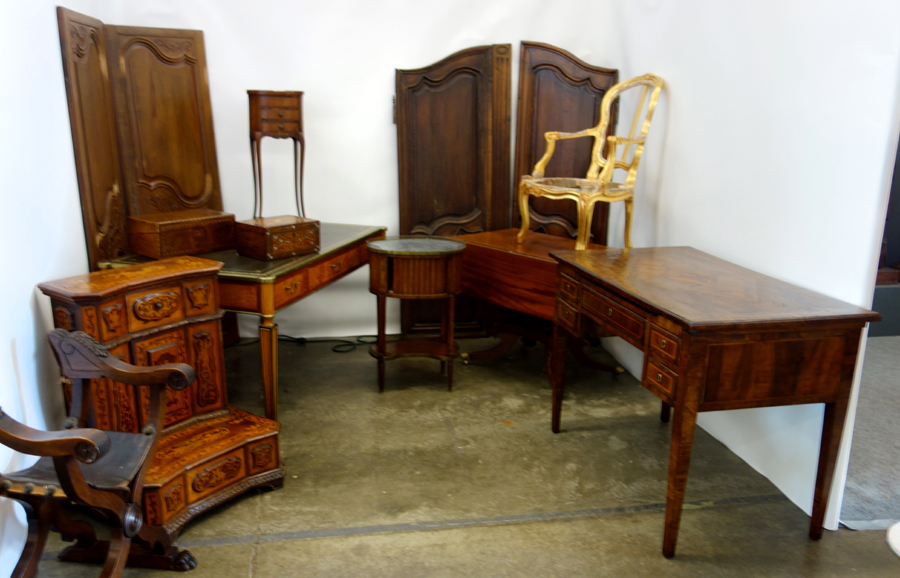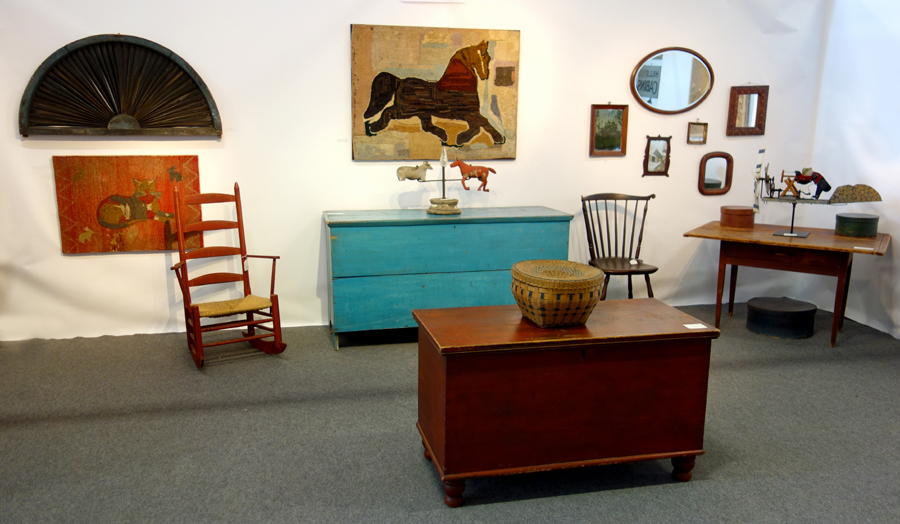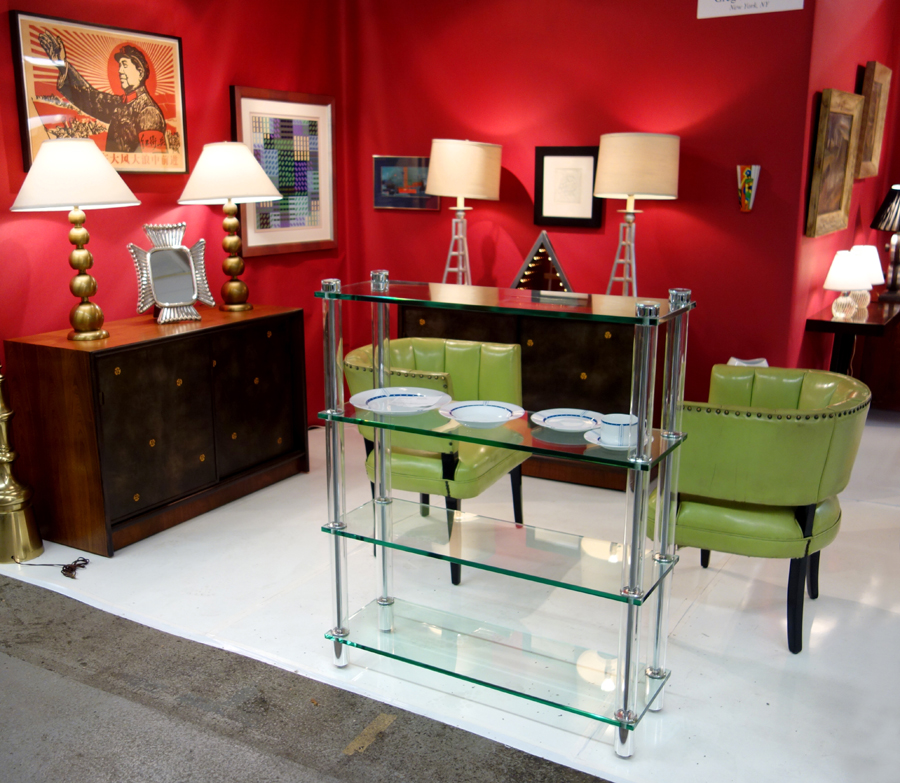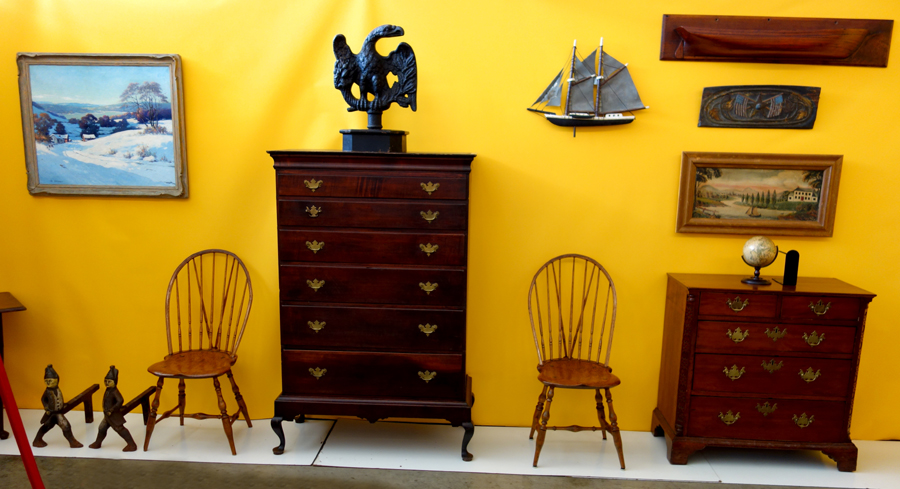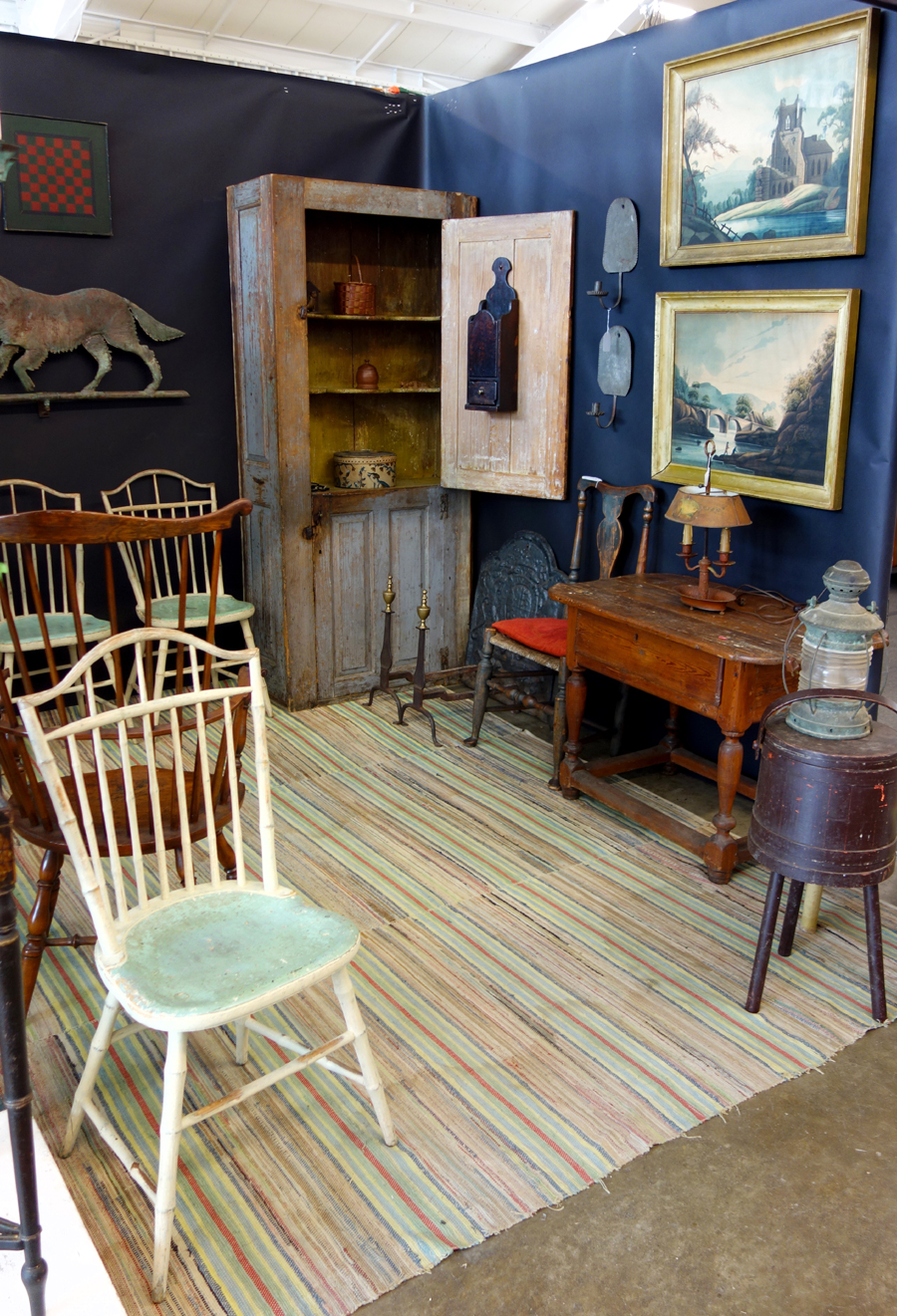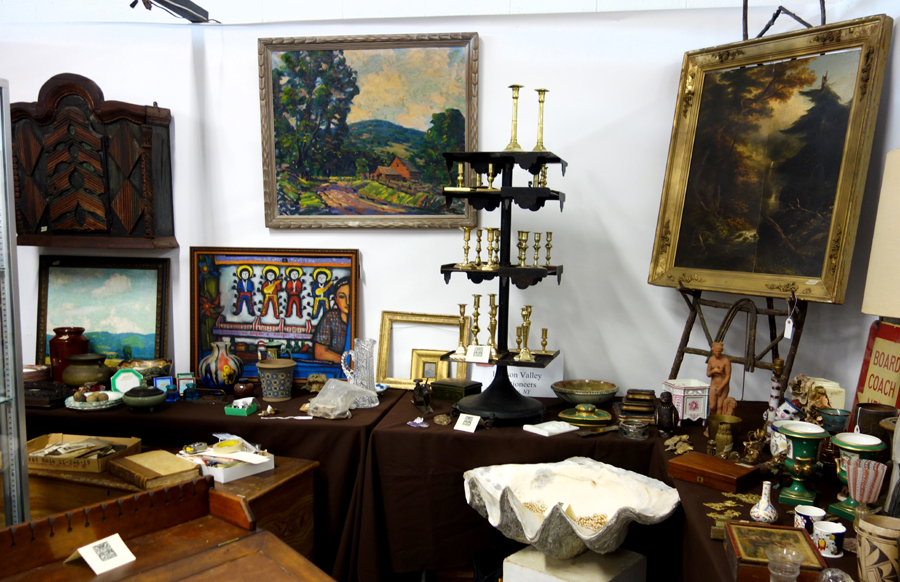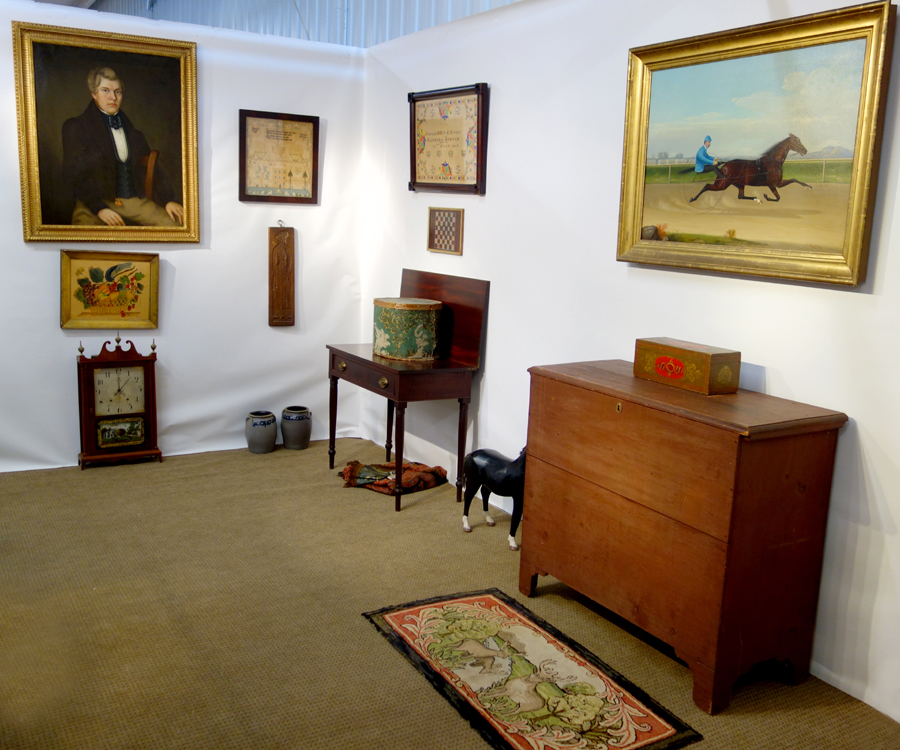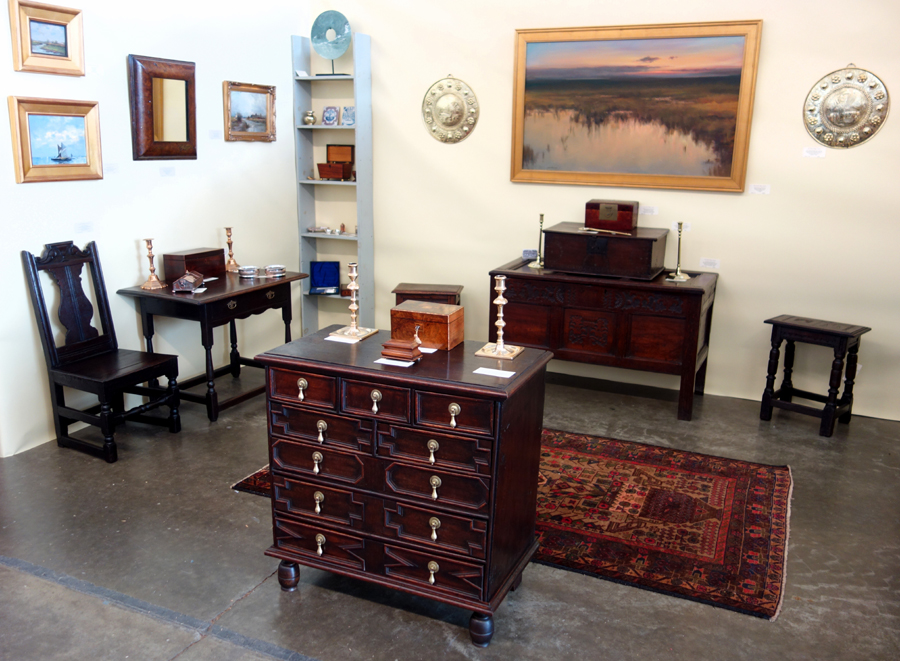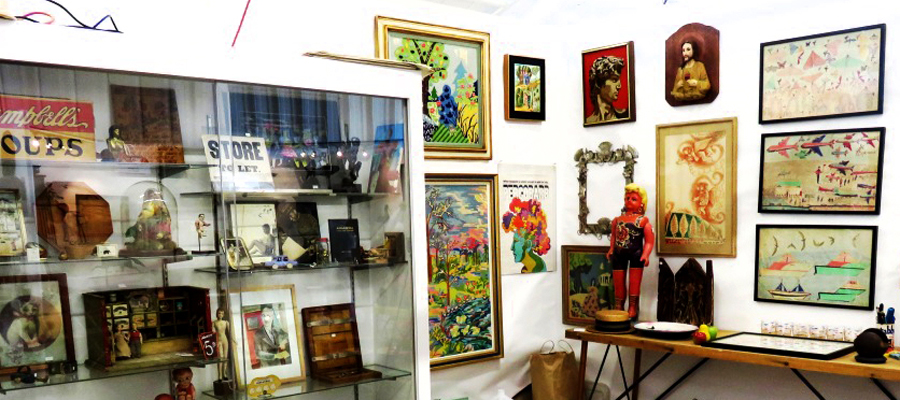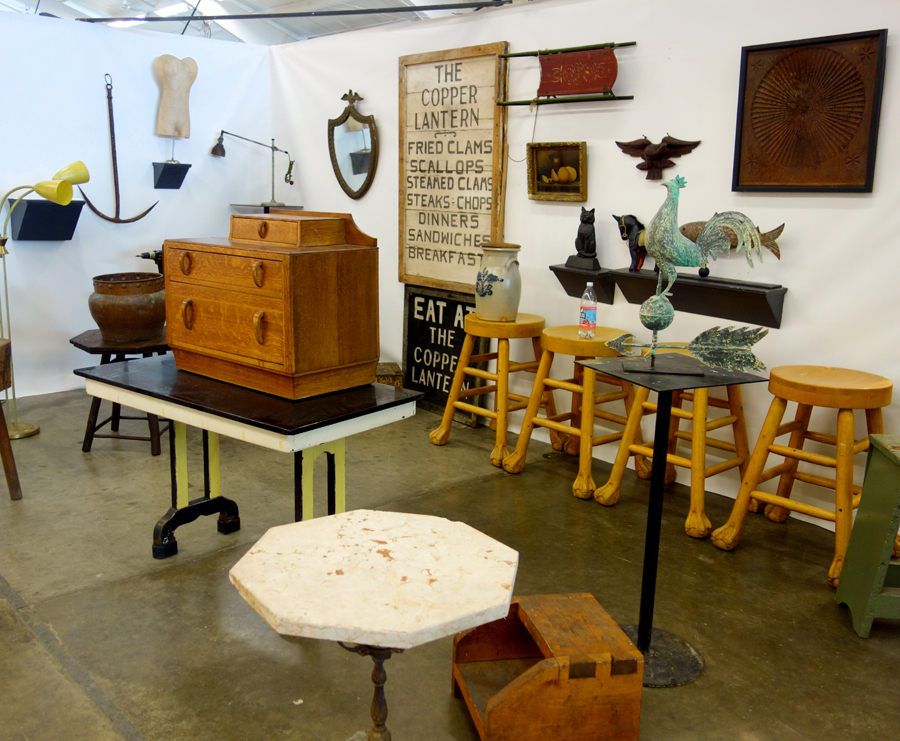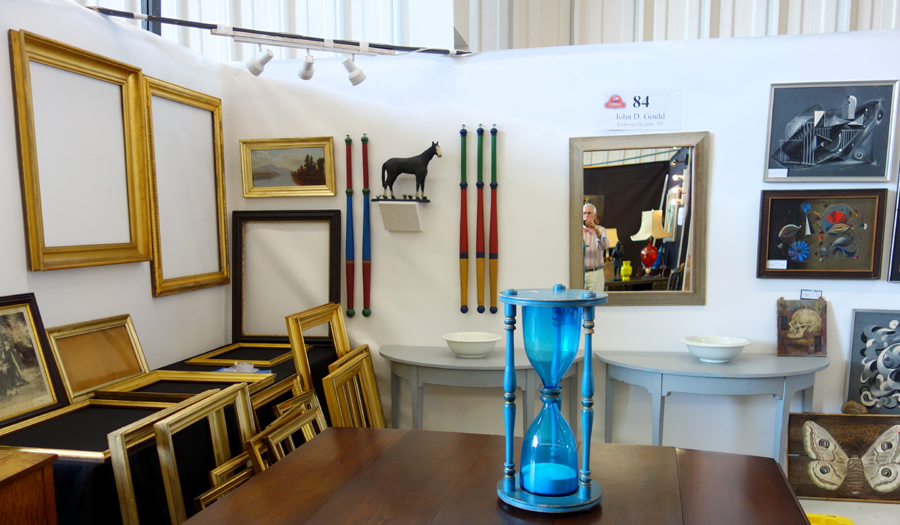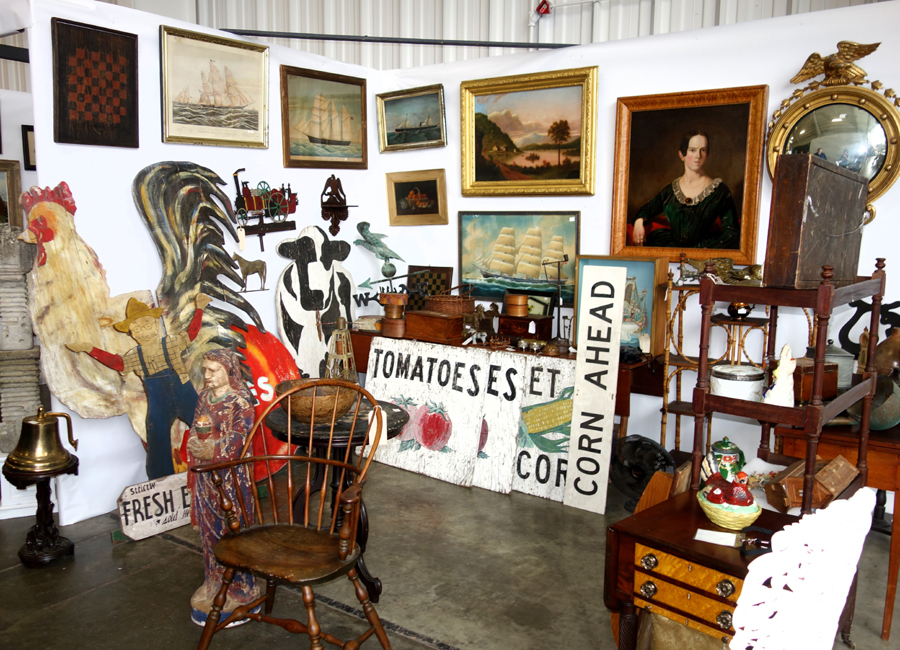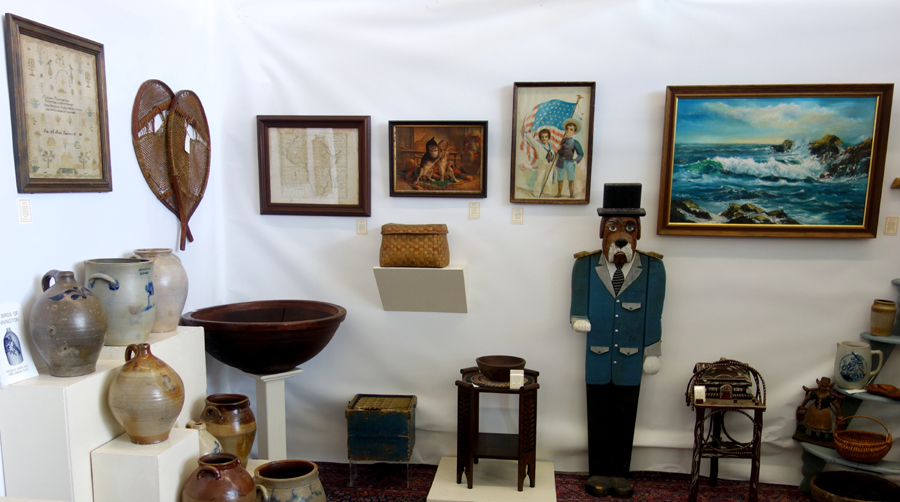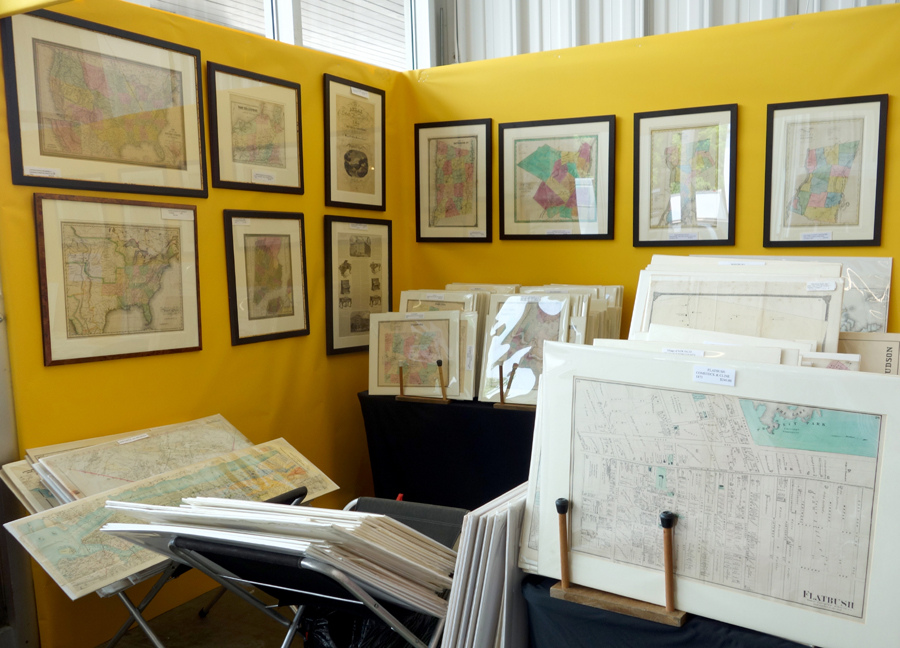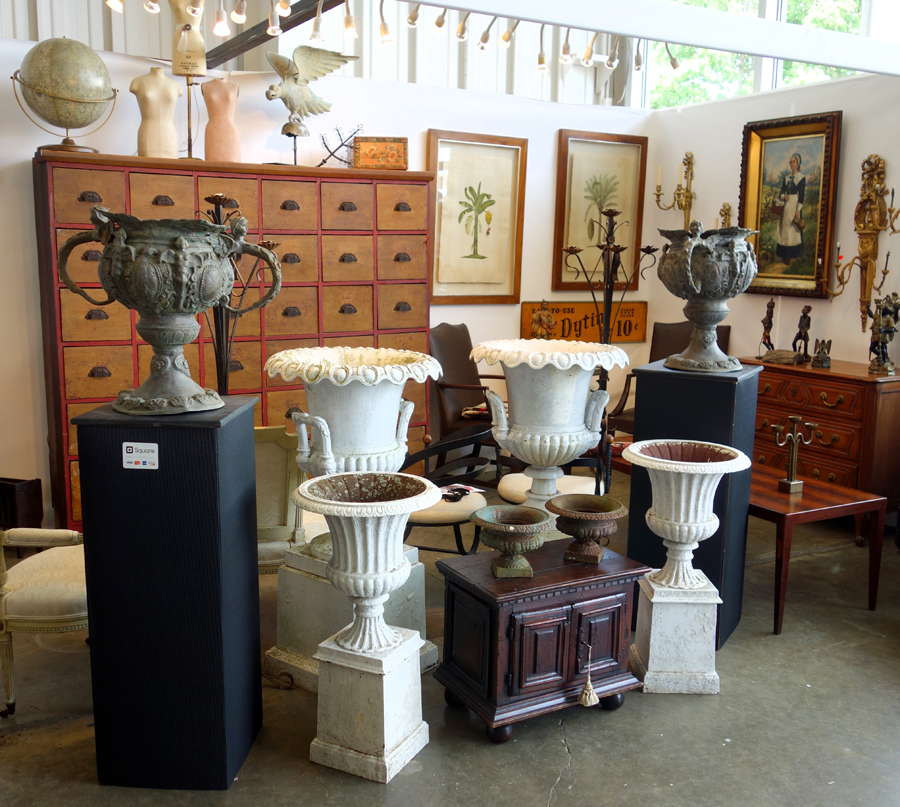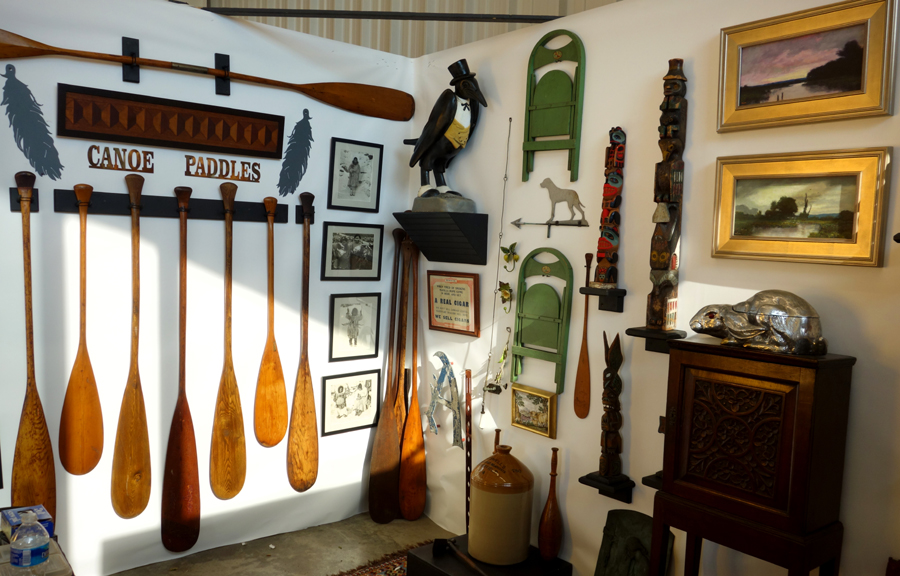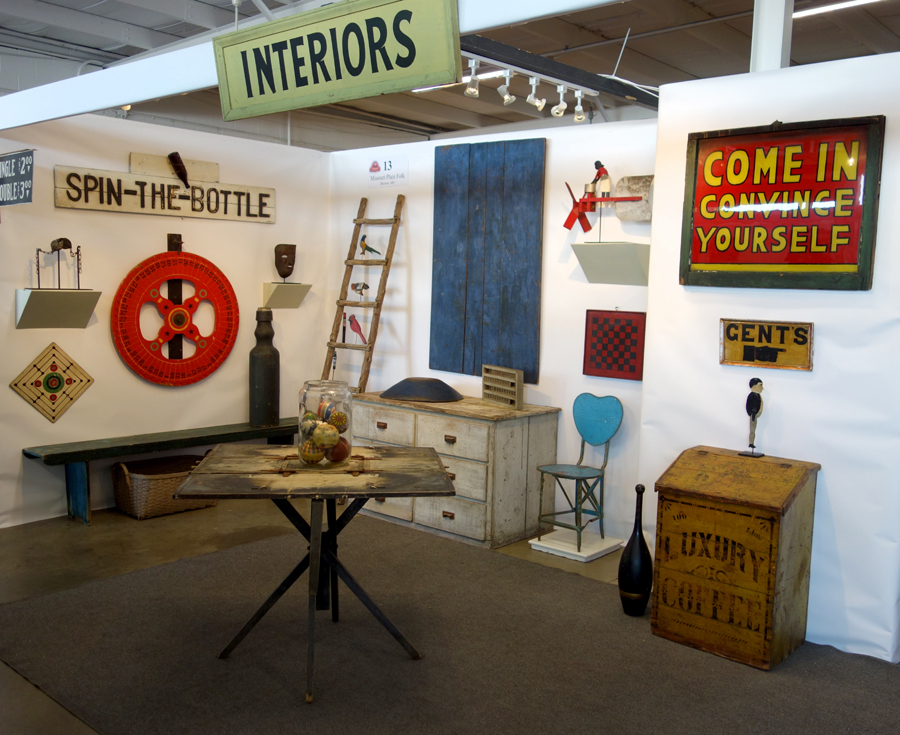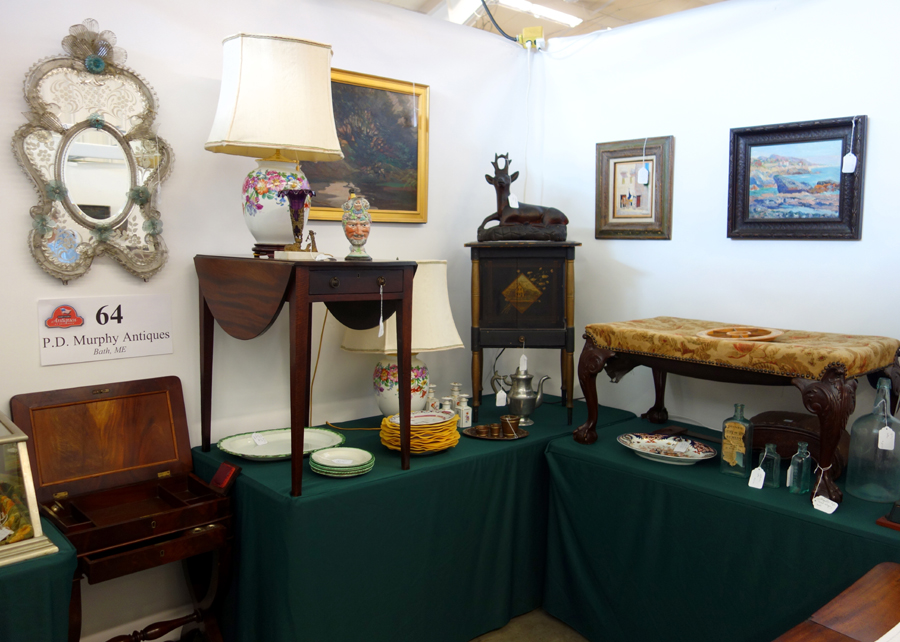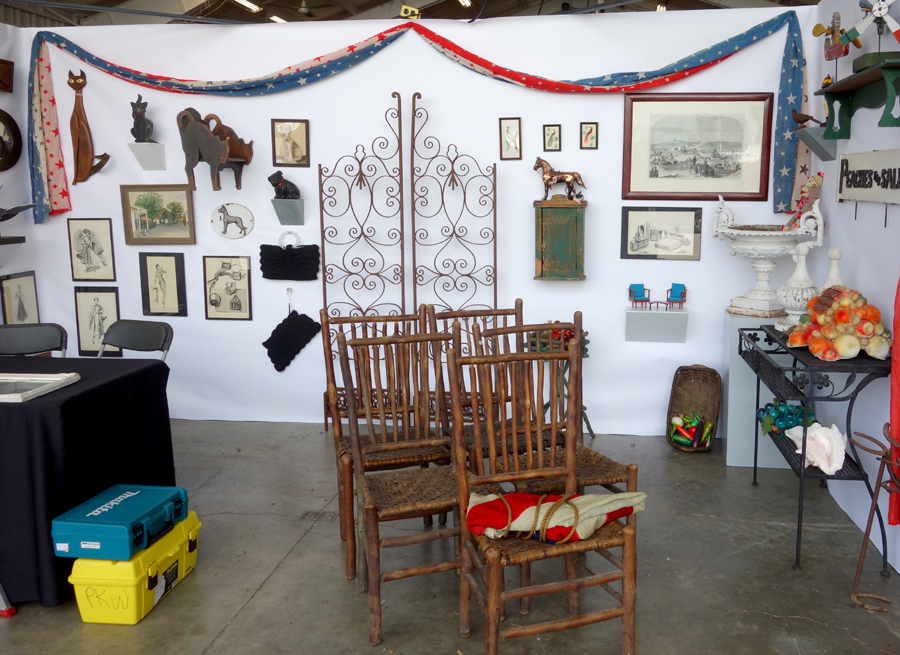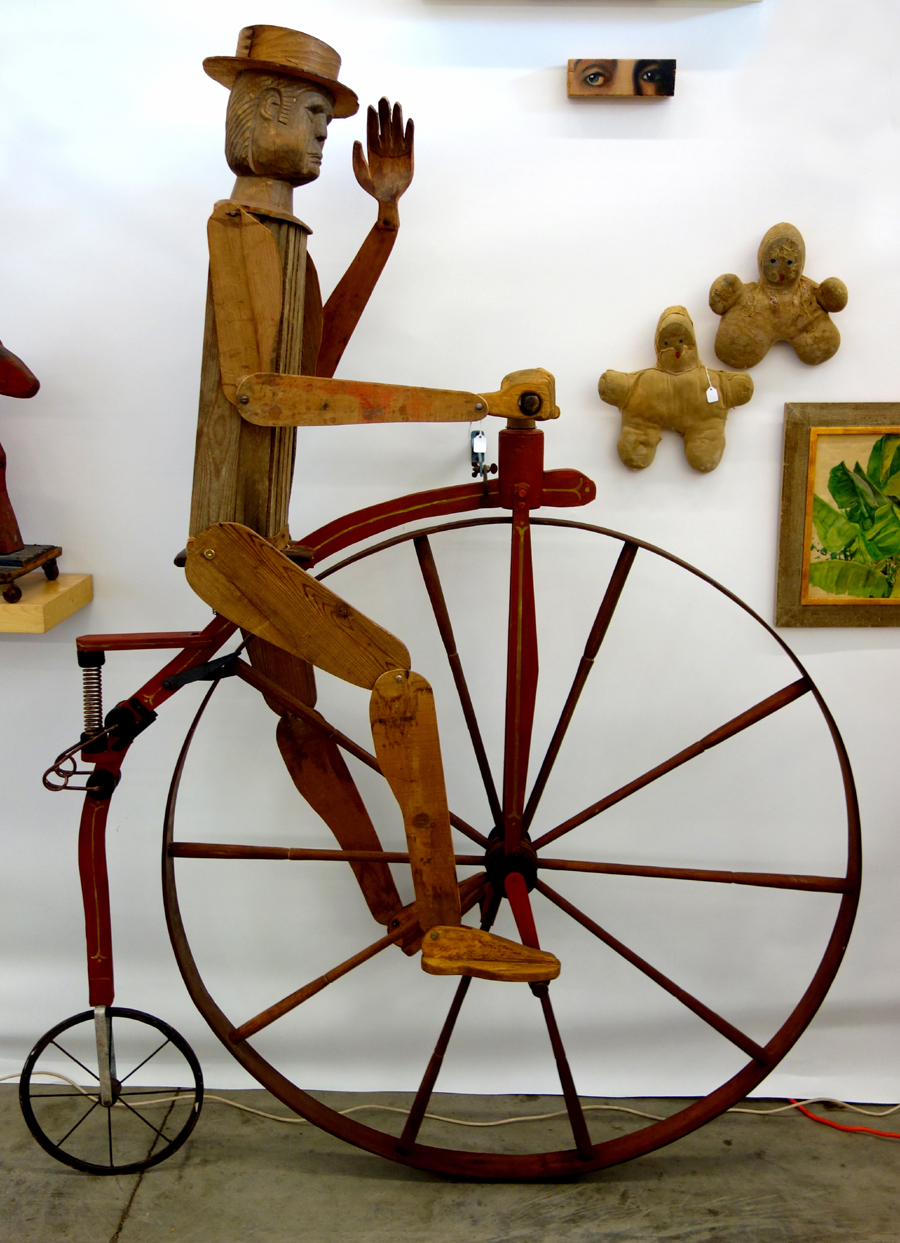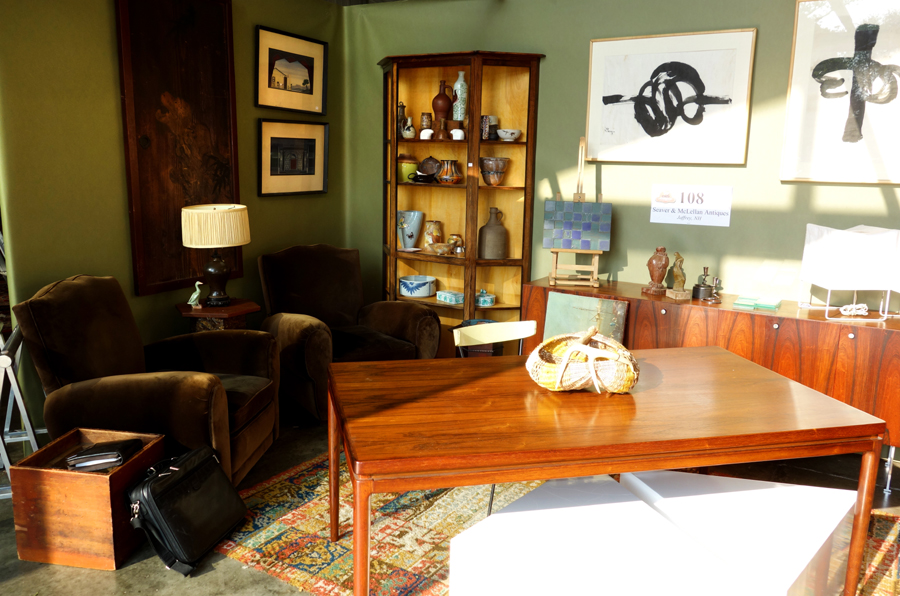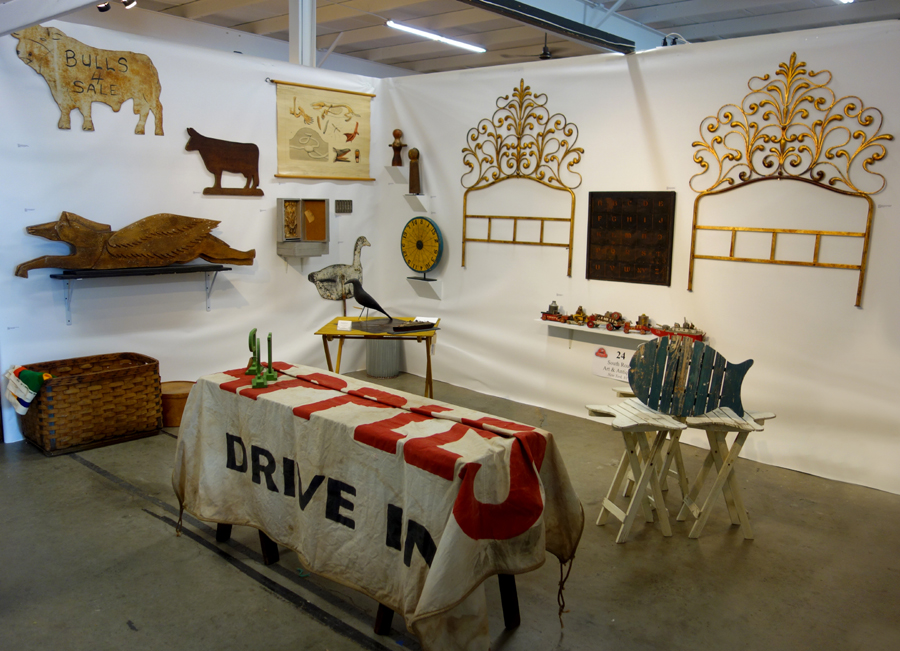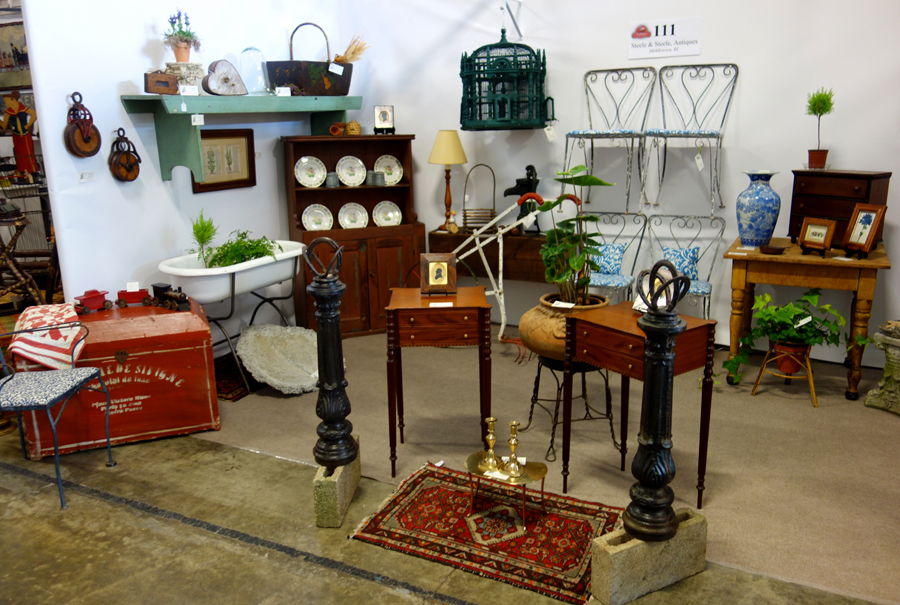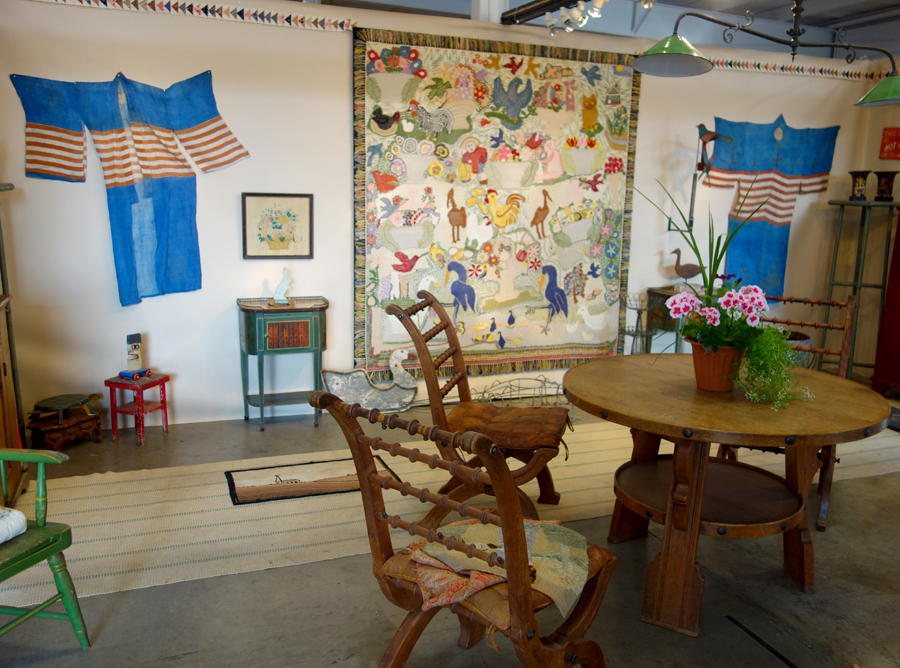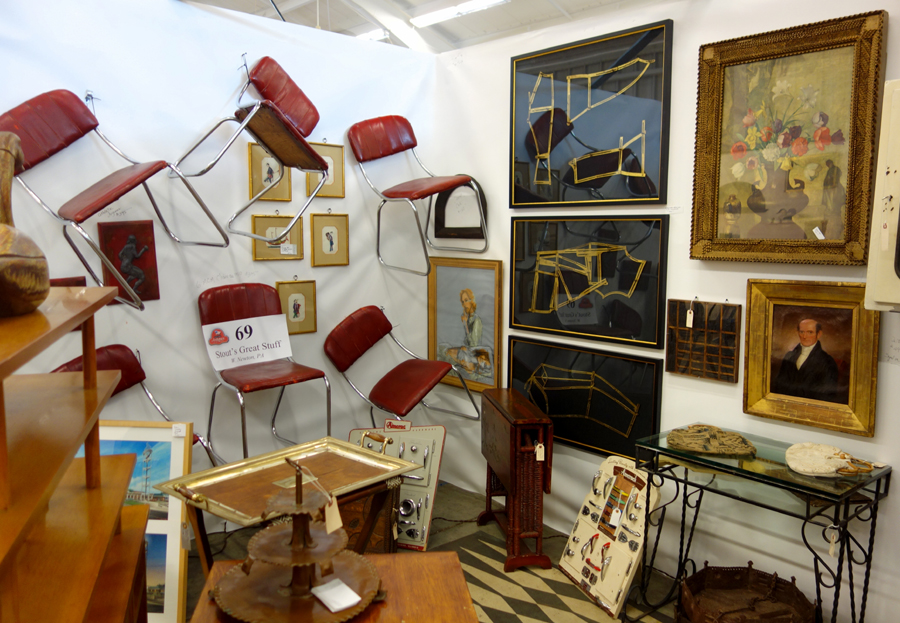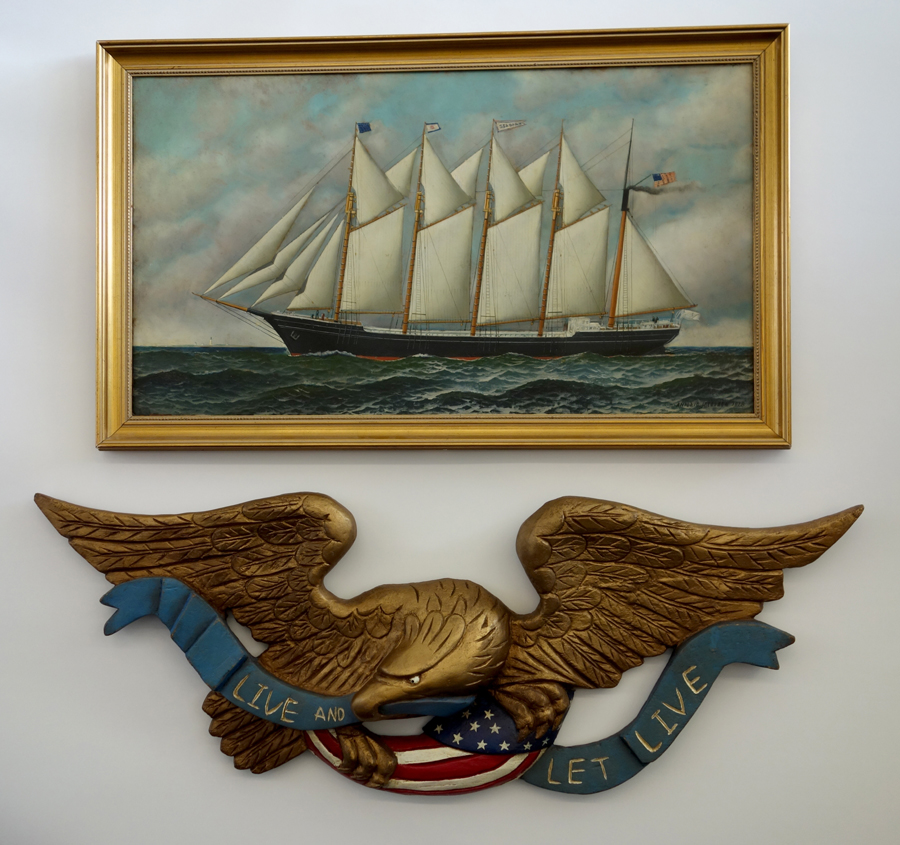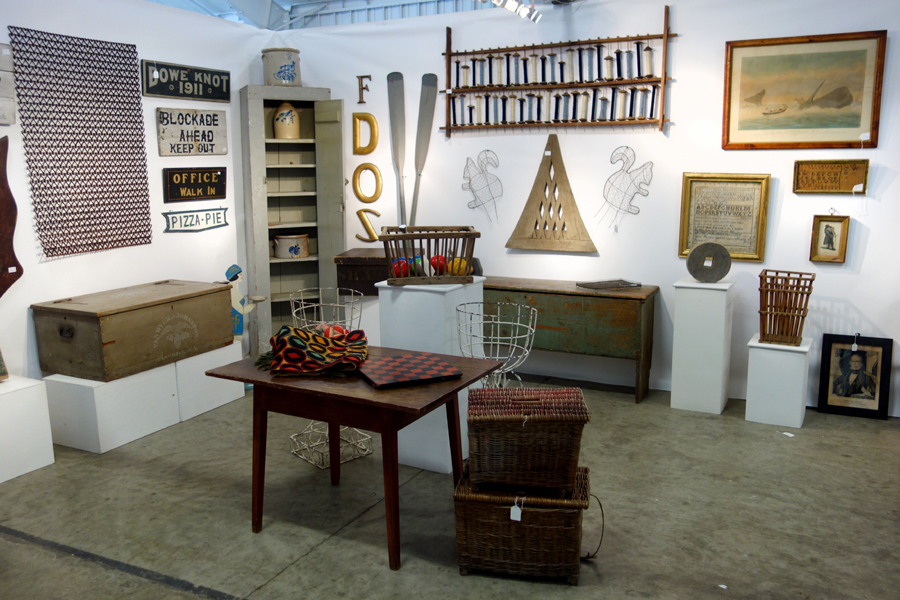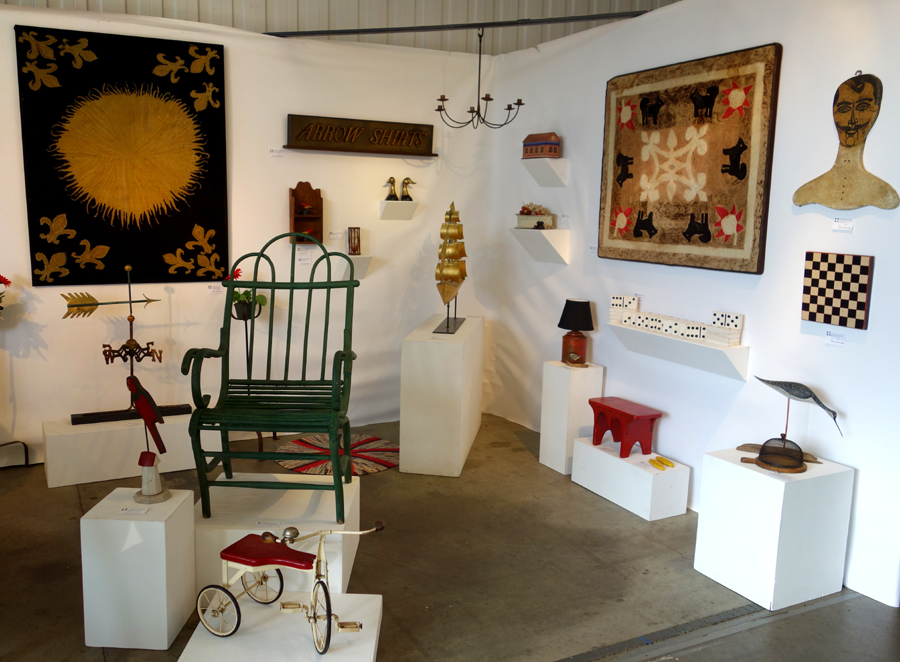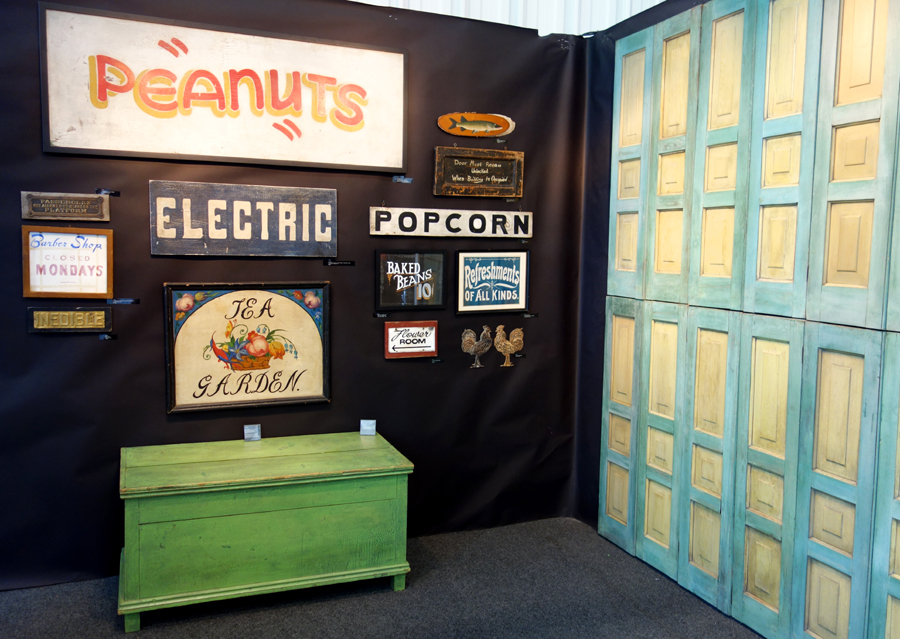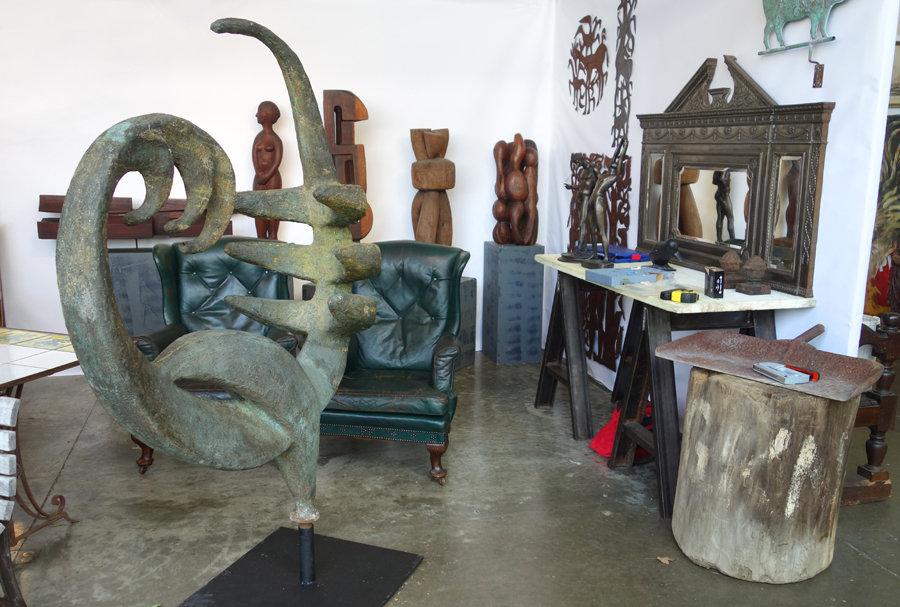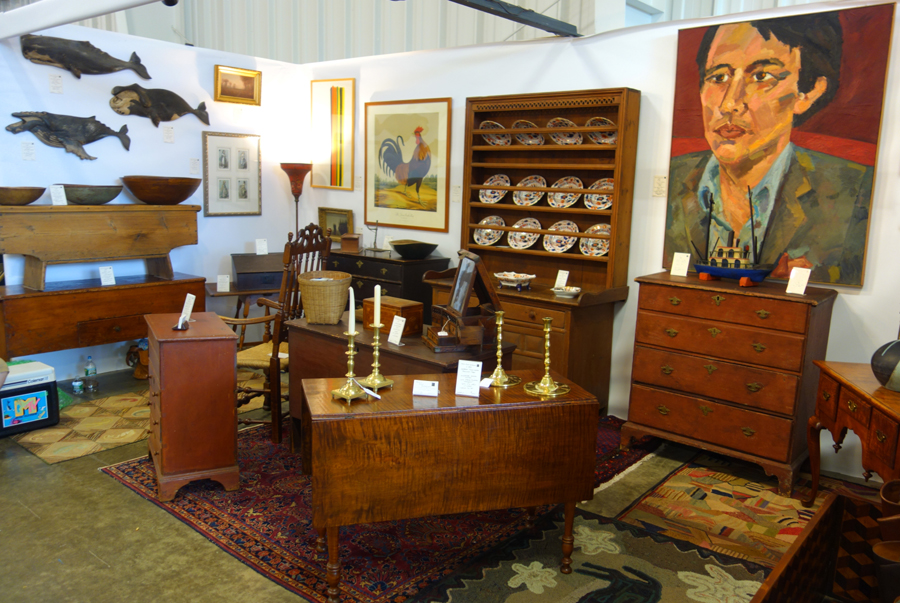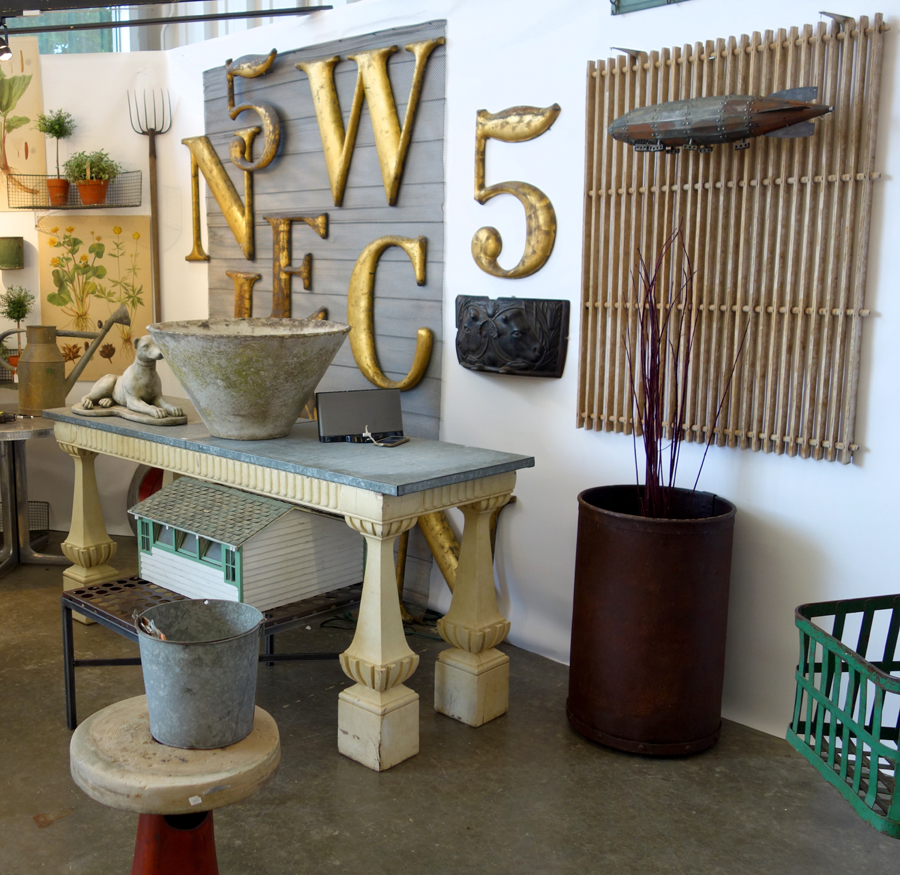Review by Greg Smith;
Photos by R. Scudder Smith
RHINEBECK, N.Y. — The word on the street, or perhaps more colloquially “from the dealer’s mouth,” is that Frank Gaglio has reinvented Rhinebeck with the spirit and vigor of “the good old days.” The twice-annual show celebrated its 40th anniversary over Memorial Day weekend with hot buyers, hot weather and plenty of cool water to keep the pace going.
“I’m happy to say that Rhinebeck has a cachet about it,” said Gaglio, owner of Barn Star Productions and show manager. “People like coming to the show. It’s only gotten better and I’m glad to still be a part of it.”
Gaglio has seen the show evolve for the better part of 30 years, though this is his second year at the helm. His experience as a dealer and talent as an event promoter produce an appearance of ease, which, by all accounts given, hides the workhorse beneath.
“Frank did a terrific job,” said Bill Union of Art & Antiques Gallery, Worcester, Mass. “He puts his heart and soul into it, he was around every minute of the show. This was probably the best-run Rhinebeck show I’ve been a part of, and I’ve done it for years.”
Even as the temperature peaked near 100 degrees, buyers arrived in droves with tickets being sold late into both days (May 28–29) and armfuls of merchandise walking off the field into the sunset. Gaglio confidently expects the admissions figures to top all recent years.
Part of Gaglio’s recipe for success has been his intuition for what the market wants and what the buyers are asking for. Steering clear of a genre-specific show, Gaglio welcomes a wide array of merchandise from more than 150 dealers.
“One customer came up to me and he was so excited about the material and the diversity,” said Gaglio. “Over the years I’ve seen Rhinebeck evolve and stay current with what’s hot. We still give the collectors an opportunity to buy on all levels, whether it’s Americana, European, Midcentury Modern or fine art.”
Michael Friedman, Weston, Conn., combined folk art with Nineteenth Century photography, including works by D.F. Barry, Reinhardt, Scott and Edward Curtis, along with Carl Bodmer lithographs. Also on show were two Catalan Bakelite radios and an all-original Nineteenth Century ventriloquist head with tin hat on stand. Friedman said, “It was an eclectic mix for us, much of it of a Western or Native American theme and our usual mixture of folk art and Adirondack rustic.” Friedman chalked up sales for a few photography works, folk art carved canes, a silver sports trophy and noted healthy early sales to other dealers.
Friedman shared the consensus view that Rhinebeck is feeling more alive. “The show went well. It has grown quite a bit since Frank took it over, this one with 150 dealers felt more like opening day in years past.”
Bill Union was set up in the newest wing of the show, Building D, and found a mountain of buyers for his selection of Nineteenth Century American art. Union was able to tally up sales of 12 works, including pieces by J.J. Enneking, John Whorf, S. Hoffington Smith and a handful of Hudson River scenes.
“I think the early American art market is coming back. It should; after all, it’s the history of this country,” said Union. “There was a great crowd and I did terrific. It was one of the best shows I’ve ever had there.”
Folk art dealer Victor Weinblatt, South Hadley, Mass., said, “Spring Rhinebeck proved, emphatically, that the Age of Miracles has not passed. Not known for a spare aesthetic, my booth was quickly edited to the point of minimalism, and despite a few vain attempts to restock, it was finally picked clean by Sunday morning.”
Weinblatt lined his booth with advertising and signage known for original paint and bold statements. The dealer’s long list of sales included a circa 1820 farmhouse door in original red painted surface and hardware, a circa 1850 “Tea Garden” New Hampshire White Mountains polychrome tavern sign with an overflowing still life of flowers and a track trophy engraved “On the Mark,” headed to a dealer-runner’s personal collection. Also on the list of sales was a fanciful iron trade sign in cadmium yellow reading “Bros,” a double-sided large reversible Golf & Baseball dart board, a hanging Deco polychrome linen-fold “Strawberries” sign, a diminutive turned leg Nineteenth Century stand in Prussian Blue, a hanging double-sided “College Guest Home” polychrome sign in an exquisitely elaborated Gothic font, and a two part, apolitical “No Trump” sign, which was undoubtedly a reference to a bid in the game of bridge.
Jim Grievo, Stockton, N.J., decorated his booth with a quality mix of Americana. The dealer brought along a selection of American stoneware, including a Remmey Philadelphia pitcher from 1896. Of the selection, Grievo had four pieces sell off the floor. The dealer brought an 1835 oil on canvas portrait of a gentleman from Vermont, which sat above an Eli Terry scroll and bracket clock. On the same wall was a New Jersey sampler sitting adjacent to a Nineteenth Century fraktur with an early painted checkerboard beneath. The dealer also sold a New Hampshire red stained pine blanket chest, circa 1840.
Grievo said, “It was a very good show, there were thousands of people through both days. I sold quite a bit, mostly decorative.”
Phil Warish of Blue Farm Antiques, Franklin, N.Y., showed a selection of brightly colored country items and decorative objects. His wares included a pair of vivid orange farm tables, a selection of quilts, including a Mexican rose quilt that sold early on in the show, and a Cole Bros billboard circus poster, dated 1937, with a large weeping tiger that sold to a poster dealer right out the gate. Warish said, “It had the most beautiful lithography. I don’t sell a lot of posters, but I am a graphic designer, and I had respect for the craft in that picture.” The dealer’s other sales included a pair of Twentieth Century chairs designed by Ward Bennett for Gimbels as well as a pair of midcentury lamps.
Regarding the show’s diverse selection, Warish said, “It’s the best variety I’ve seen there in a very long time.”
Sanford Levy of Jenkinstown Antiques, New Paltz, N.Y., set up with traditional antique furniture and fine art. The dealer brought an Eighteenth Century English oak drop leaf table flanked with a pair of Nineteenth Century Hepplewhite chairs from Kingston, N.Y., that descended in the McEntee family. Along the back wall of the booth were a pair of John Vanderlyn Jr Nineteenth Century portrait paintings of a man and a woman in original gilt frames above a Sheraton tiger-maple server, circa 1830s.
Debbie Turi, Roseland, N.J., exhibited a nice display of advertising, fine art, cast iron, Americana and country objects. Turi said, “I finished up very well. Everything I sold was fresh merchandise.” Among her sales were two tramp art frames, a selection of furniture pieces, including an early Twentieth Century oak file cabinet with barrister doors, a handful of smalls and an attractive group of three Reuben Haley “Ruba Rombic” vases.
A traditional selection of English furniture amid landscape paintings and decorative accessories could be found at the booth of Jan and John Maggs Antiques, Conway, Mass. Standing front and center was a Seventeenth Century English chest of drawers in oak with applied moldings and brass drops. On the back wall stood a Seventeenth Century oak coffer, probably English, and elaborately carved with sunflowers. The coffer stood beneath a large oil on canvas painting by Dennis Sheehan depicting a view of a marshland. The painting sold, as did a pair of English Nineteenth Century landscapes and various pieces from the dealers selection of Georgian and pre-Georgian jewelry.
John Maggs said, “I think the buyers were many and eager, they stayed for a long time. There were a lot of younger buyers in the crowd, which is very positive.”
Bruce Emond of Village Braider found success placing Modern sculpture among traditional furnishings and Americana wall hangings. The Plymouth, Mass., dealer lined the back of his booth with five wooden sculptures by Steve Karr and sold four of them, along with a pair of antique English leather wing chairs, a large-scale Modernist skeletal bronze sculpture, a Nineteenth Century cupboard in blue paint and a group of three Haitian steel sculptures by Janvier Louis-Juste.
Emond said, “Rhinebeck was pretty good for plenty of people; we had a good weekend and sold a lot of things. We were still doing deals past 3 and 4 pm and after the show ended on Sunday. By the end of the weekend, I had the best Rhinebeck I’ve had in ten years.”
As buyers found the pieces they were looking for, Frank Gaglio watched attentively and offered ice water or his staff of porters to make their experience all the better. Couple that with an impeccable selection of quality dealers, who each possesses a tremendous sense of presentation, and it seems Rhinebeck has found itself once again.
Gaglio continued, “The Rhinebeck show has evolved over the years to the show that it has finally become: a show that introduces new categories of materials in the areas that new buyers are interested in. When I was a dealer at the show in 1985, we used to see tremendous audience numbers and we are seeing that happen again.”
Antiques at Rhinebeck returns in October 8–9. For information, www.barnstar.com or 845-876-0616.

